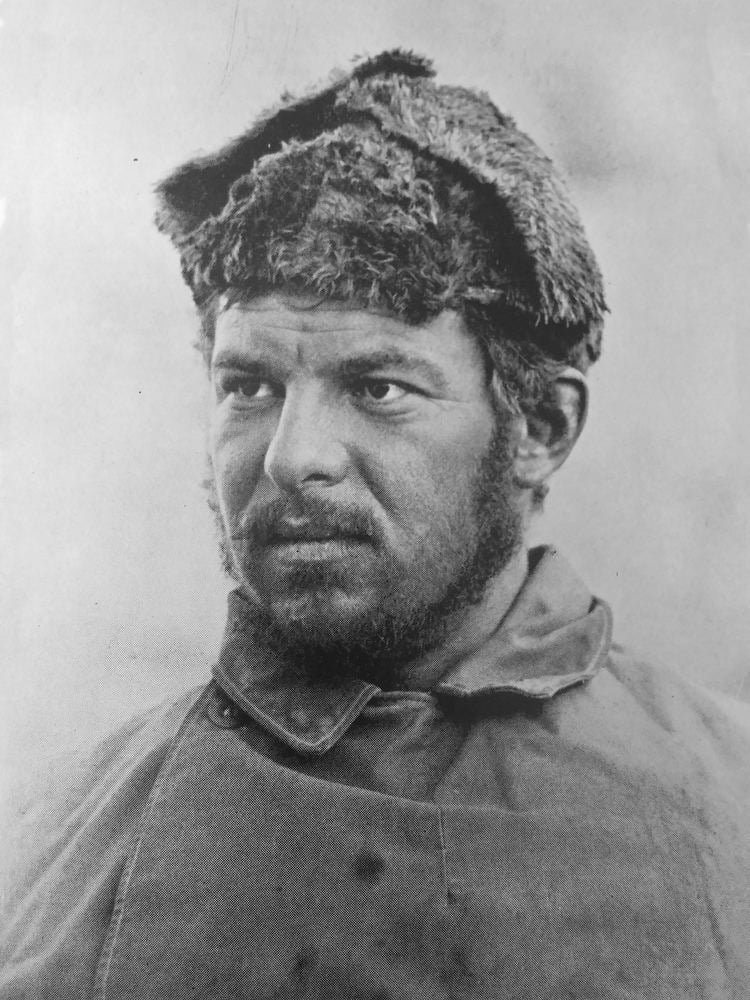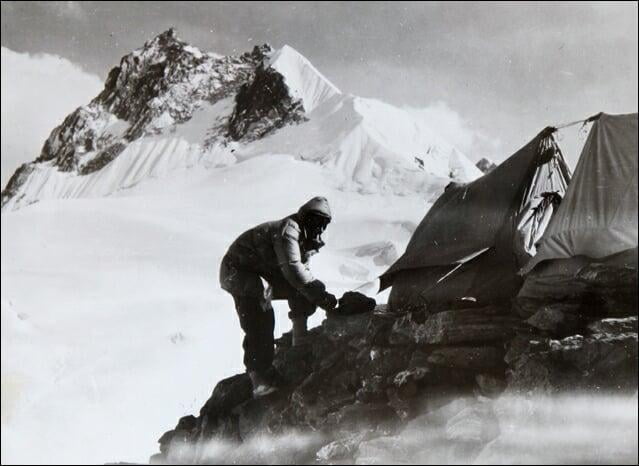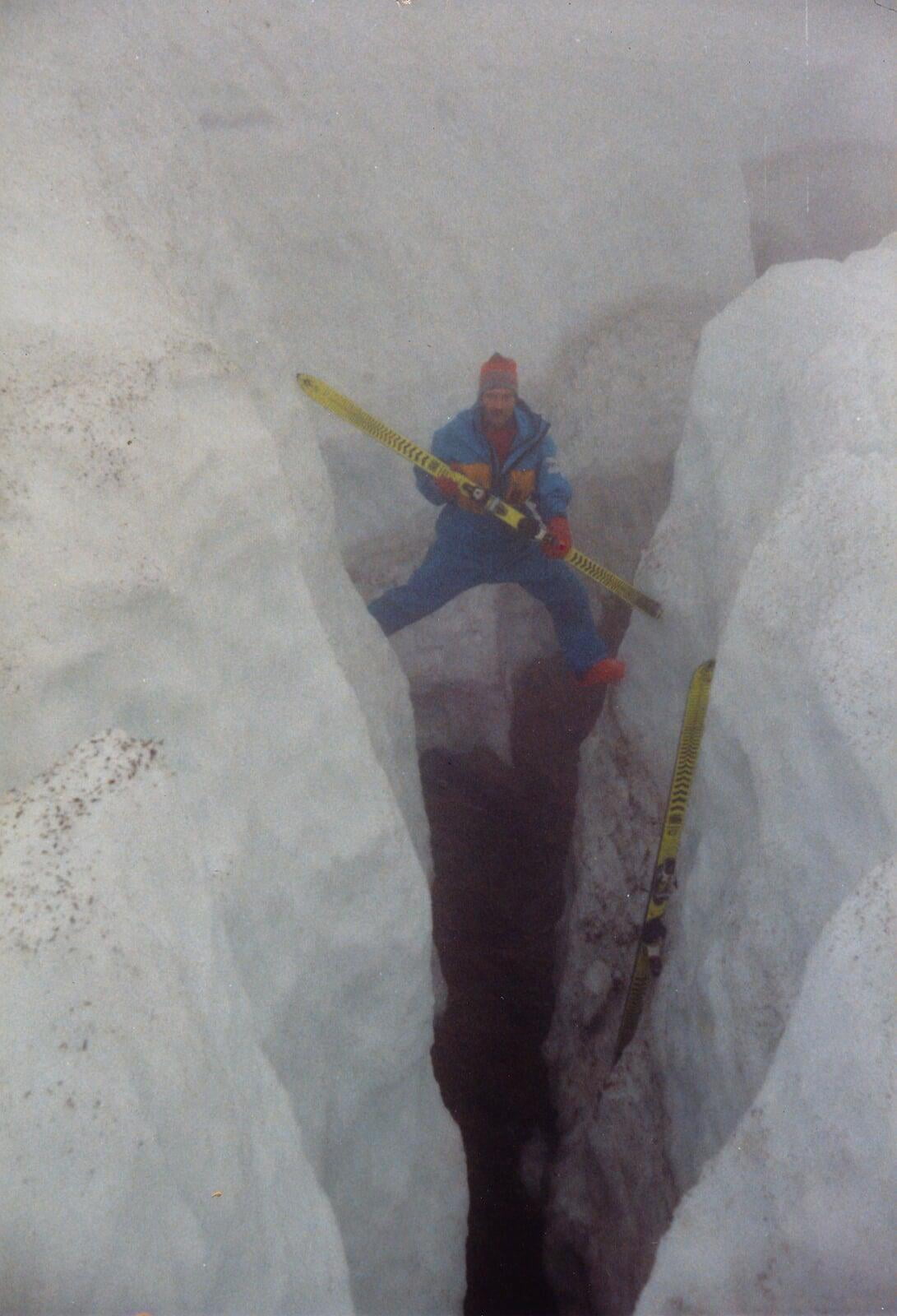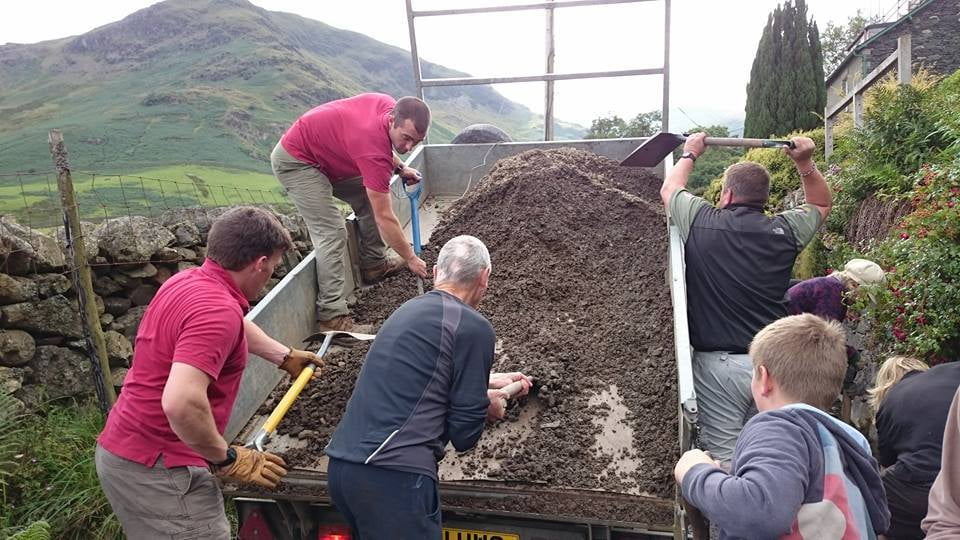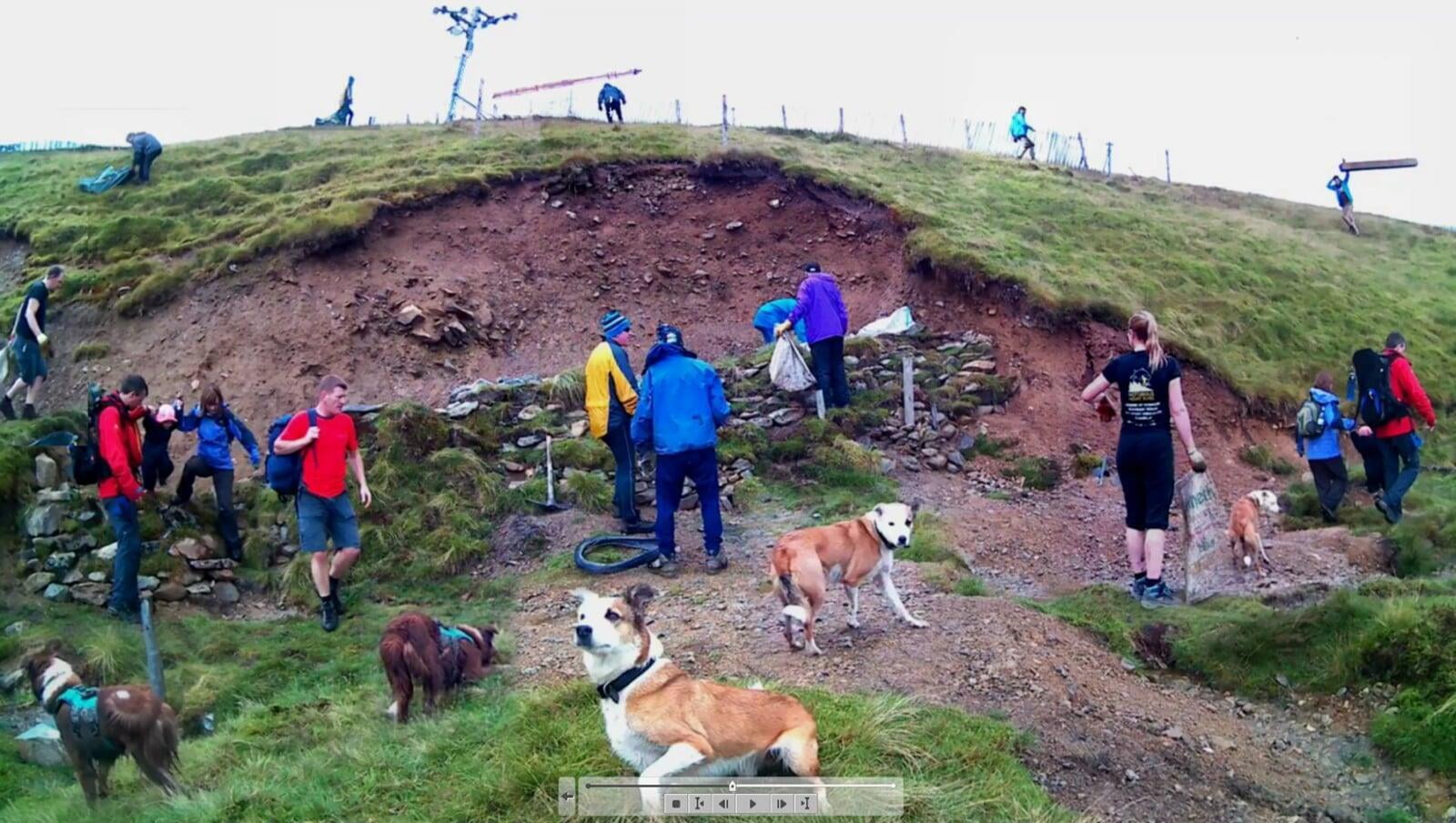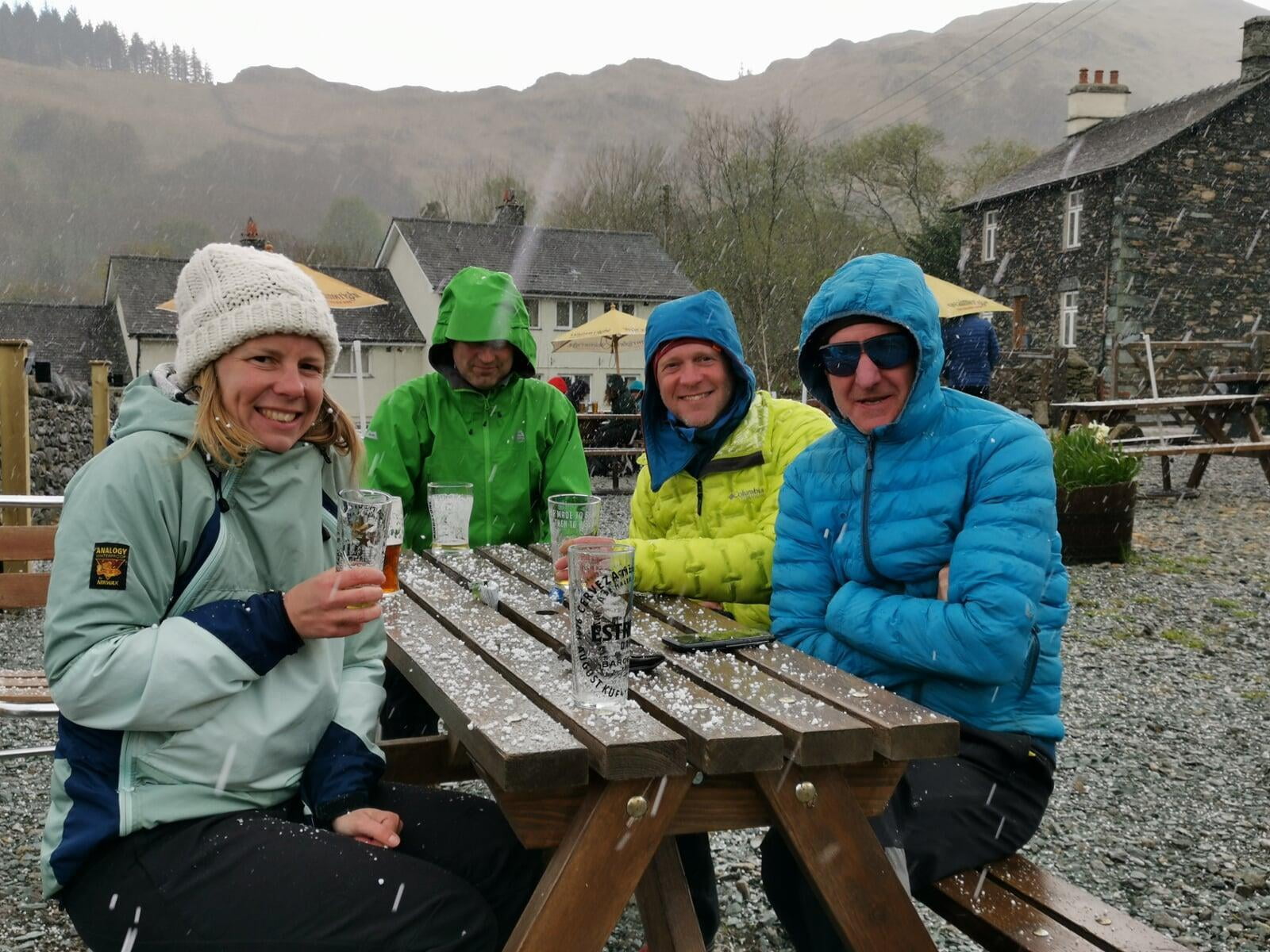Up Hill and Down Fell since 1936...
The oldest geographically-based ski club in the UK (only the Ski Club of Great Britain and the Eagle Ski Club are older as far as we know), the Lake District Ski Club is part of the history of UK skiing and Lake District life...
The oldest geographically-based ski organisation in the UK (only the Ski Club of Great Britain and the Eagle club are older), the Lake District Ski Club is part of the history of UK skiing and fabric of Cumbrian life. In 1954 we also built the first permanent ski tow in the UK ...
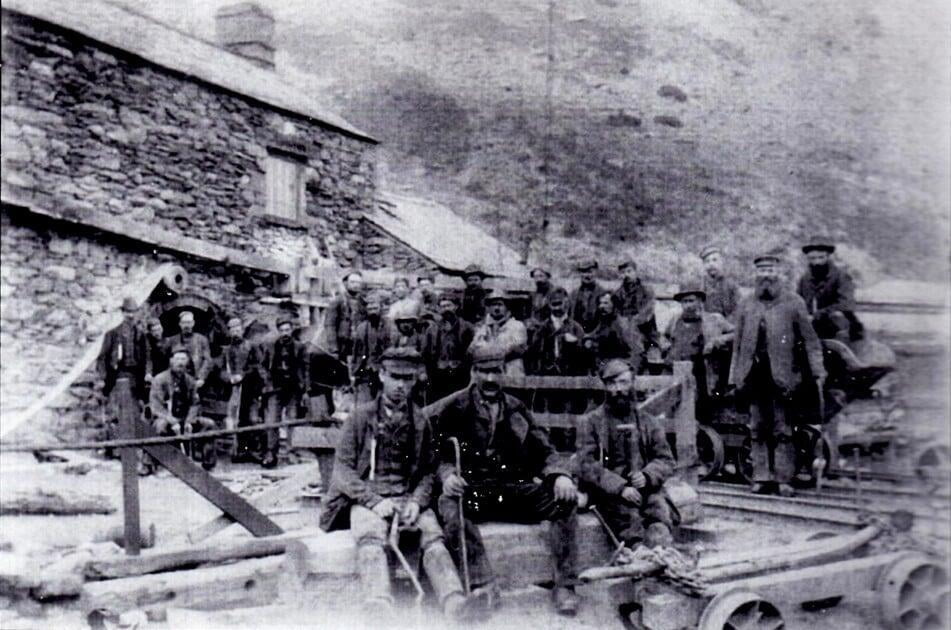
Beginnings...
Greenside miners in the 1880s
WE have to go all the way back to around 8000 BC for the first English ski artefact, also the oldest ever found anywhere in the world. To no Yorkshireman’s surprise it is a ski stick from Star Carr near Scarborough, according to Roland Huntford in his excellent book “Two Planks and a Passion”.
Recreational skiing in Cumbria doesn’t go back quite so far, although there are accounts of the workers at the Greenside lead mines (where we have our car park now) descending the fells on barrel staves strapped to their feet after a hard day’s delving.
Harry Griffin, author, former LDSC president and writer of the Guardian’s Lakeland Diary for more than 53 years, dated recreational skiing in Cumbria to at least the early 1900s.
LDSC is born...
Then, on Jan 2 1936, the inaugural meeting of the Lake District Ski Club took place (before the founding of iconic resorts such as The Three Valleys and Verbier). The story goes that local climber Molly Fitzgibbon marched into the Wastwater Hotel, the mecca for climbers in those days, and announced she was starting a ski club, adding “I want 2s/6d (12½p) from each of you”.
By February...
...the club had 40 members. The rules stated the club was to “encourage ski-running in the Lake District and Northern Pennines”.
Amateur, of course, Old Boy - anyone who accepted a fee for teaching or an exhibition was to be summarily ejected…
“Watchers” were appointed to report on the weather. Members also used their AA and RAC memberships to lean on the patrolmen or “scouts” to provide local updates to the club. Club news was disseminated via local committees posting on notice boards mounted in Kendal, Windermere and Keswick outdoor shops.
The annual subscription was mostly used to purchase equipment for hire to members: a pair of (old) skis cost 1/- (5p) for the season, borrowers to be responsible for maintenance and repairs.
Skiing initially took place on Great Dun Fell in the Pennines and a wide range of Lakeland fells. The full potential of Raise had not then been discovered...
The first president, Mr Leslie Somervell was appointed advisor on equipment while Miss Jean Crump provided tips on clothing, particularly for the ladies. Local guidance could be sought from sisters and joint secretaries, Misses M & K Scott who were also responsible for ski hire.
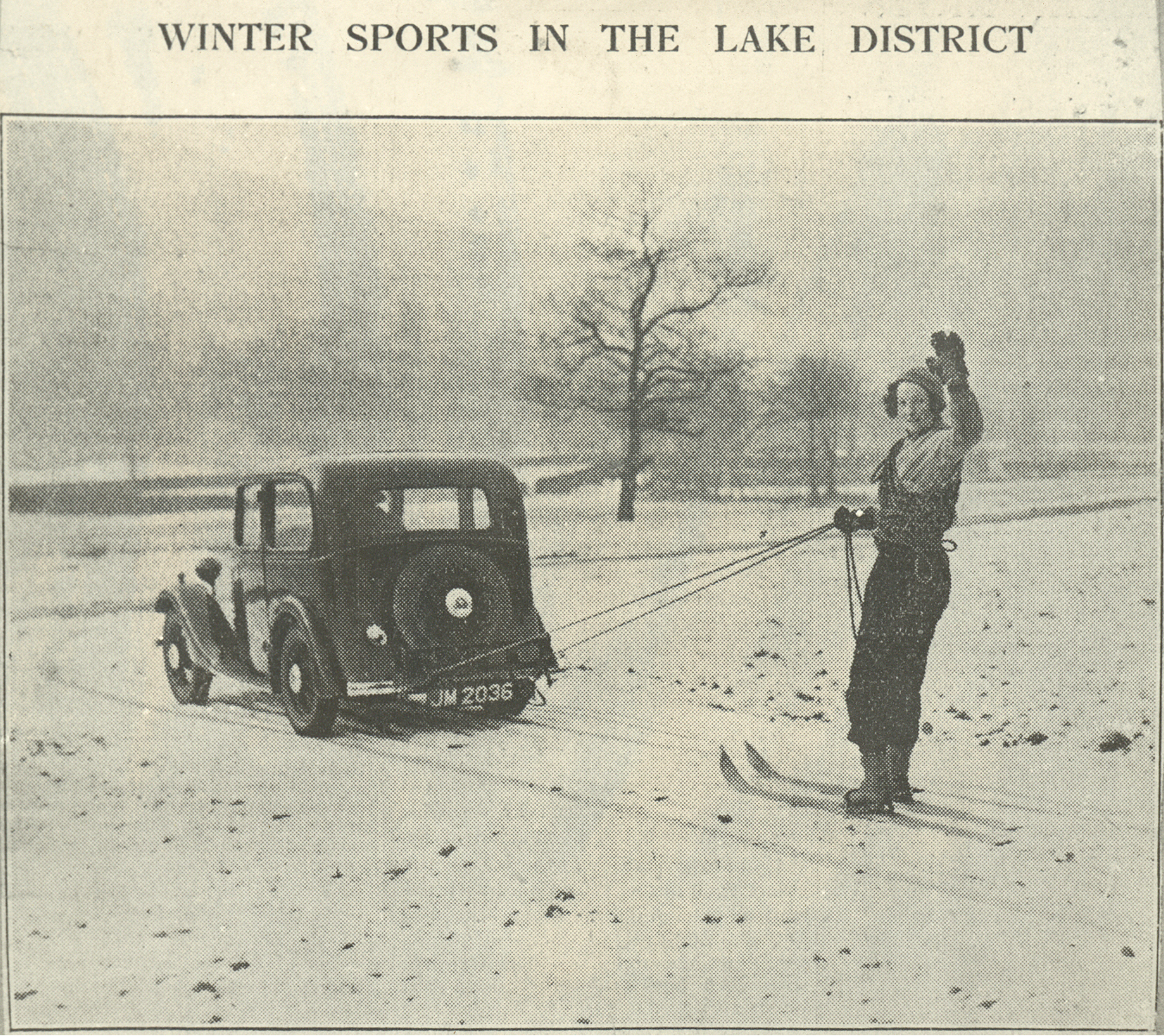
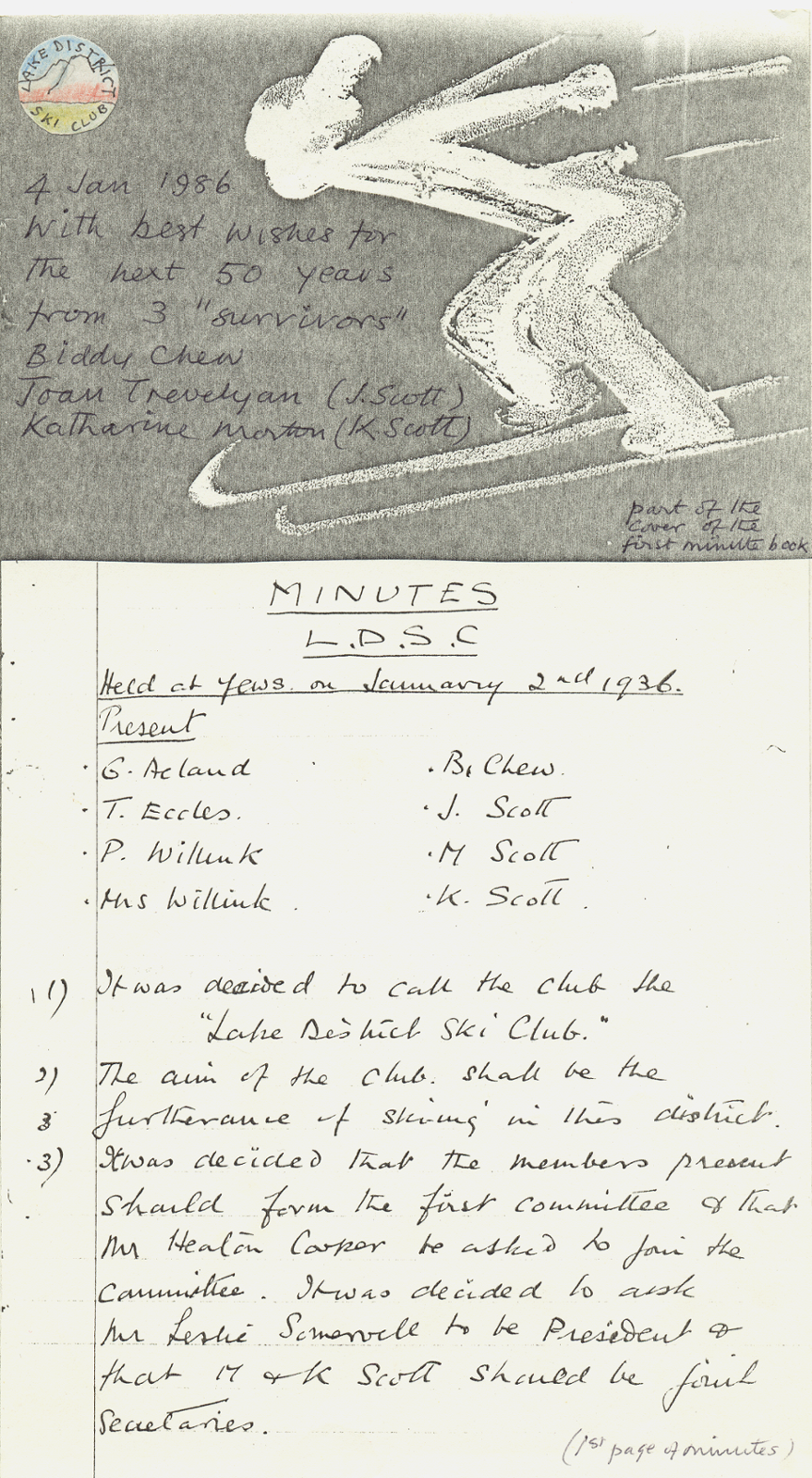
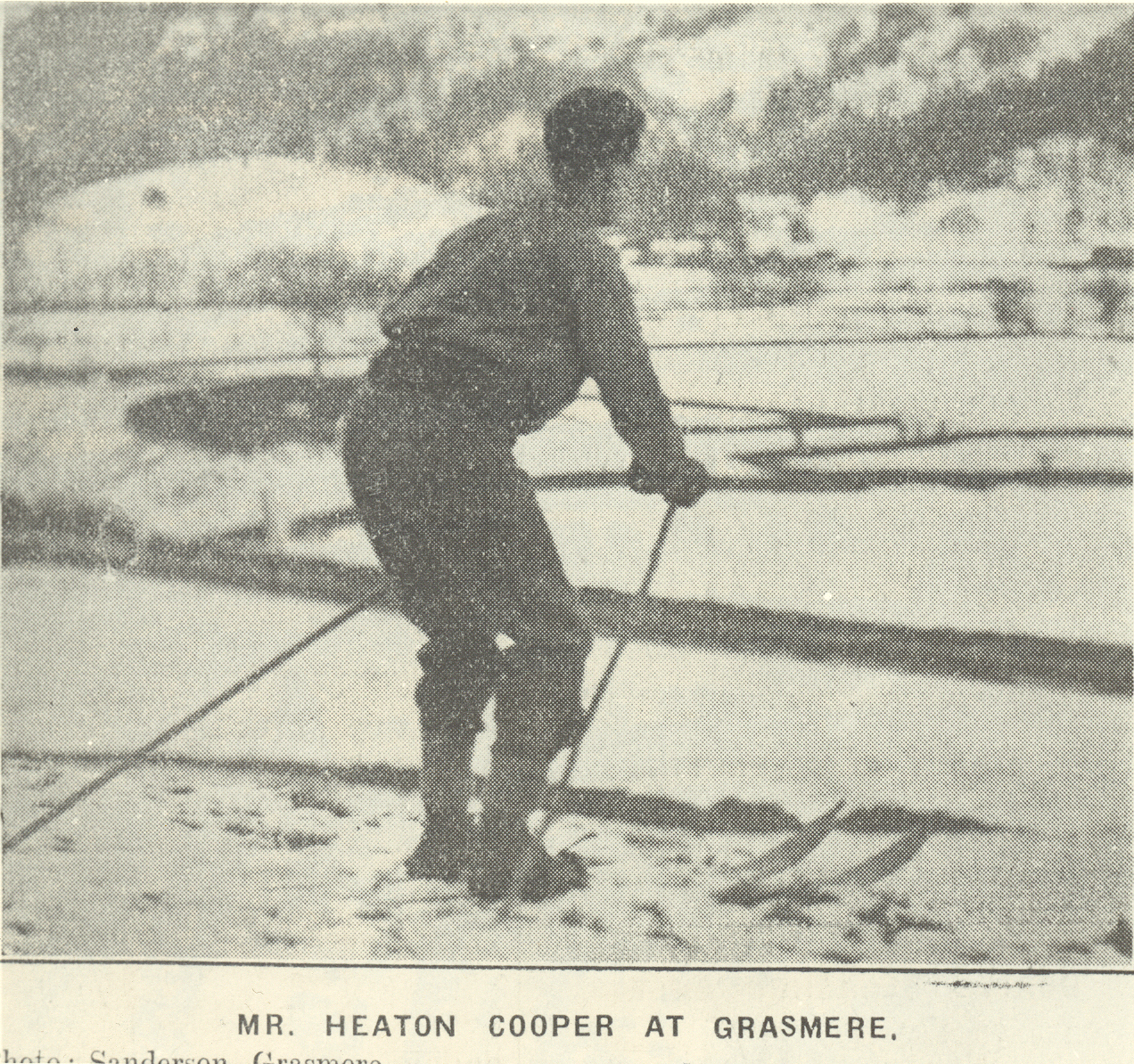
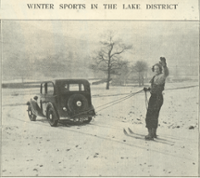
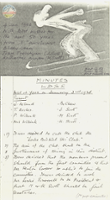
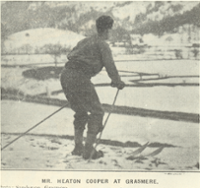
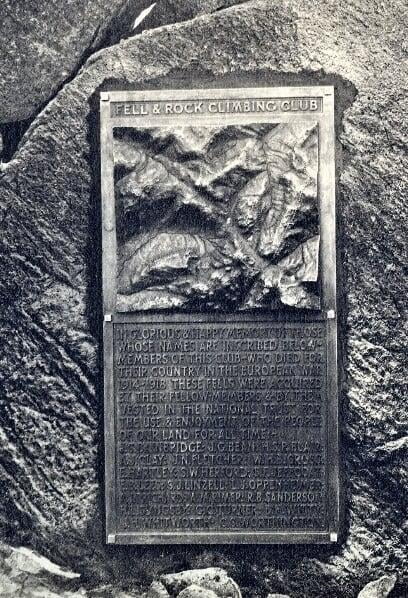
The climbing connection
The original F&RCC war memorial on Great Gable - since replaced
Early club members were mostly climbers - skiing was just a fun way to get down the mountain when the serious business had been accomplished.
Leslie Somervell was part of the Kendal K Shoes family. As secretary of the Lake District Fell and Rock Climbing Club, Leslie was closely involved in the design and installation of the famous original memorial on Great Gable. It commemorates the Lake District climbers killed in the Great War and a service is held there every year on Remembrance Sunday. Ski club members are regular attendees.
Everest...
Leslie's remarkable brother Howard took part in the 1922 and ill-fated 1924 Everest expeditions with his close friend George Mallory. Also on the 1924 expedition as official photographer was another club president, the magnificently-monikered Bentley Beetham. The 1953 official photographer, Alf Gregory, a Blackpool lad who took many iconic photos on Everest, also skied on Raise.
Another notable founder member was William Heaton Cooper, the climber and Lakeland artist. He designed the original club badge.
Lt Col Rusty Westmorland OBE, was the club’s second president and also a president of the F&RCC. He received his OBE after founding the Keswick mountain rescue team. The Westmorland Cairn on Great Gable, a few yards from Leslie Somervell's plaque, marks the spot where his ashes were placed.
Left: Howard Somervell. Right: Edmund Hillary on Everest, captured by Alf Gregory
The War Years
While many members served in the military during WW2, skiing did continue in the Lake District, although hampered by the unavailability of petrol for private transport.
Foreign holidays were obviously out, but one member at the time, TR Burnett, reported enjoying a two-week holiday round Wanlockhead in the Lowther Hills, north of Dumfries. The area was for a time marketed as an alternative to the Alps for fresh air and sport - and the “father of Scottish skiing” Philip Rankin looked at it after the war before settling on Glencoe for Scotland’s first tow.
Meanwhile, club member Major DV Emmerton MC was serving in the Eighth Army’s push up the spine of Italy. Injured in the daylight attack on Vasto Ridge, he was treated by Major Jimmy Joyce. In the club’s 1986 journal, Emmerton wrote: “It was not until twenty years later when I saw him on Raise that I realised he was [also] a member.
Post War - skiing recommences...
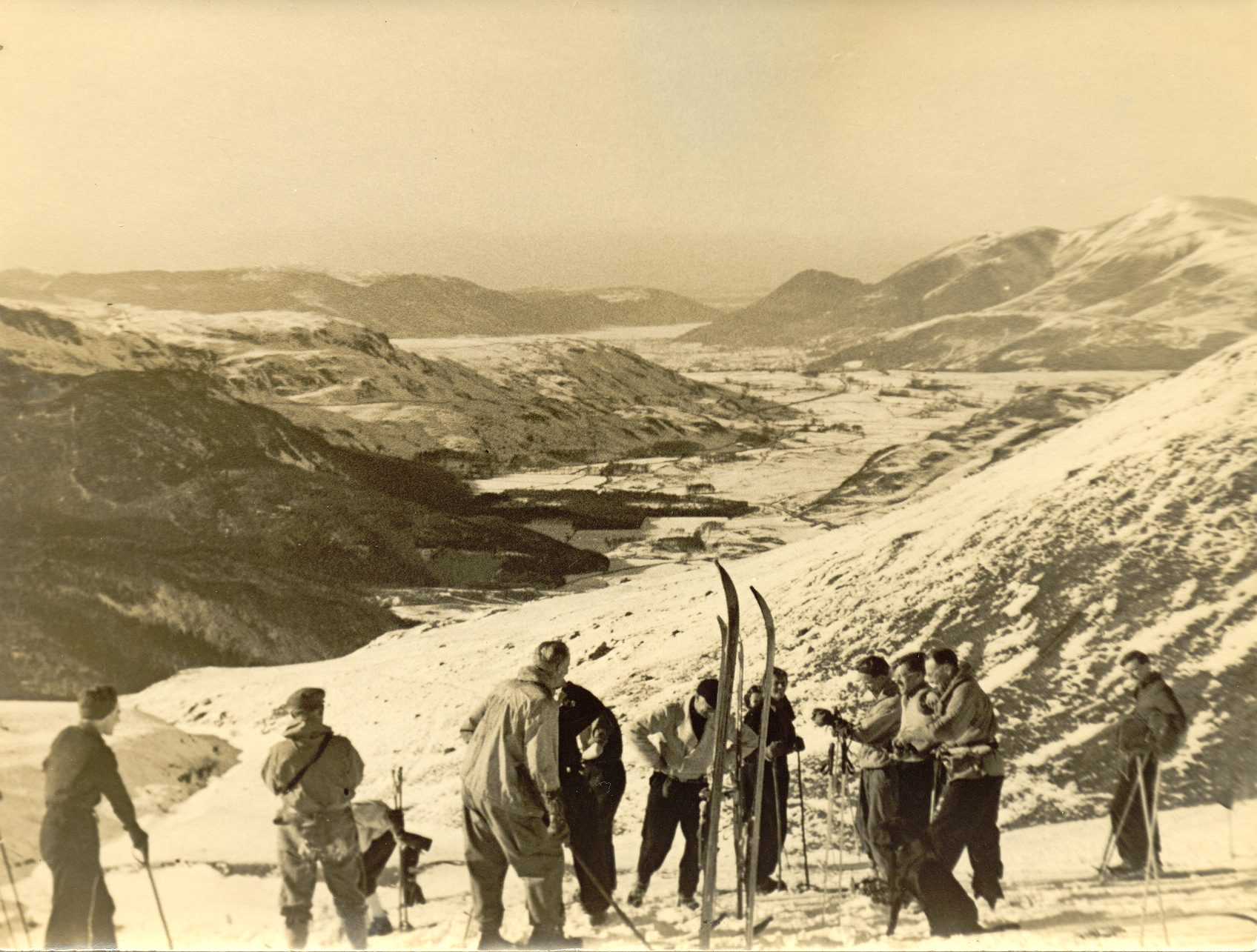

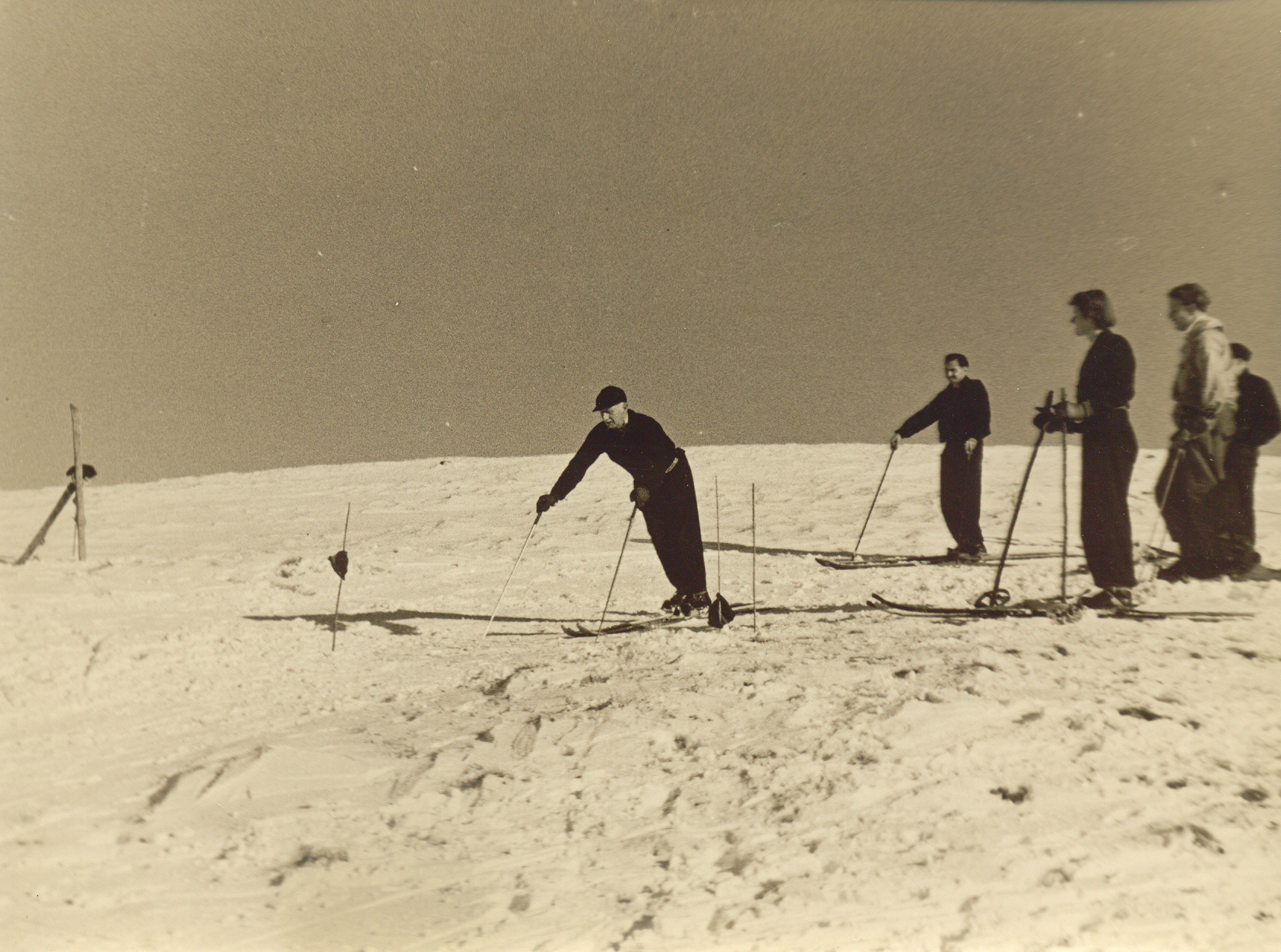
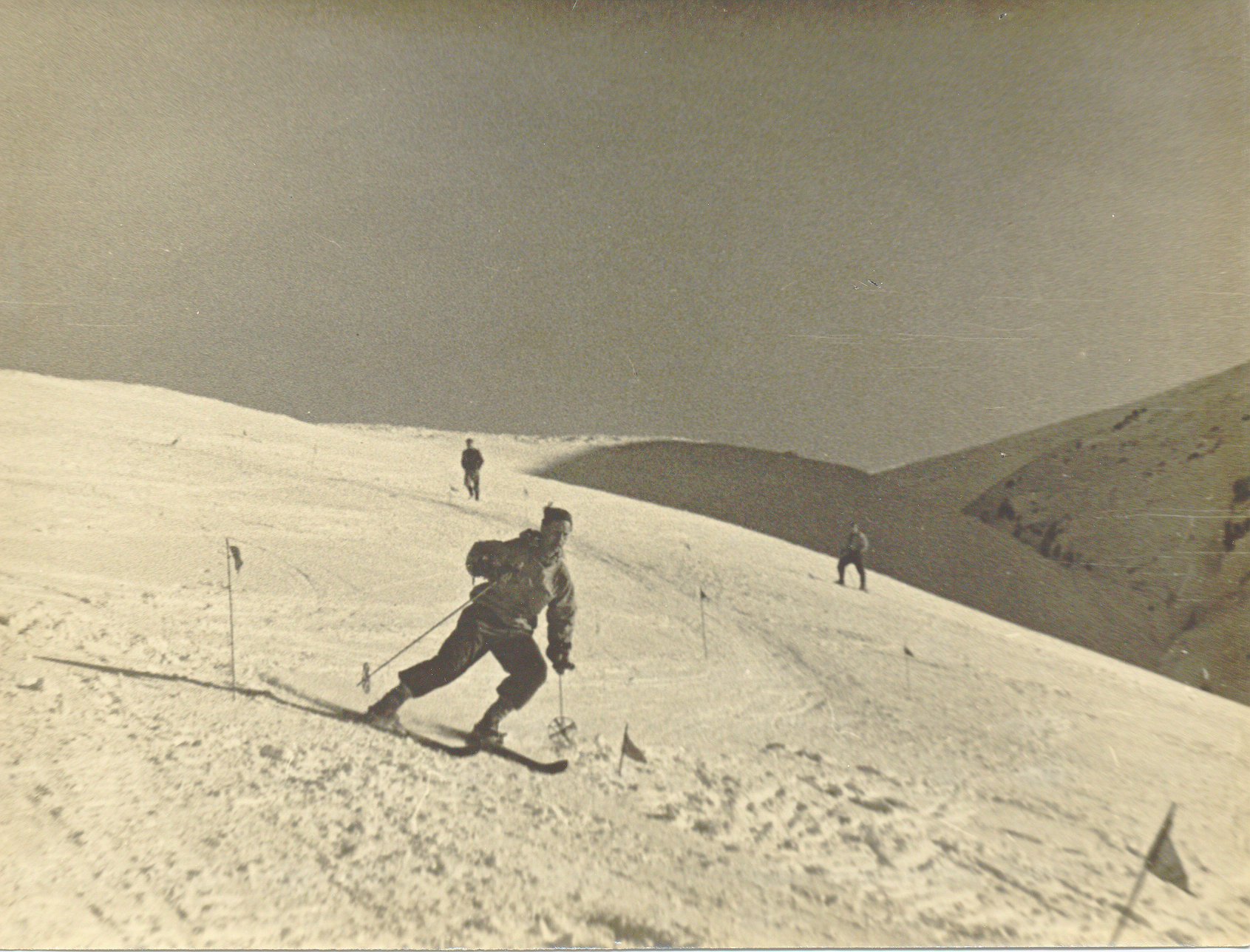
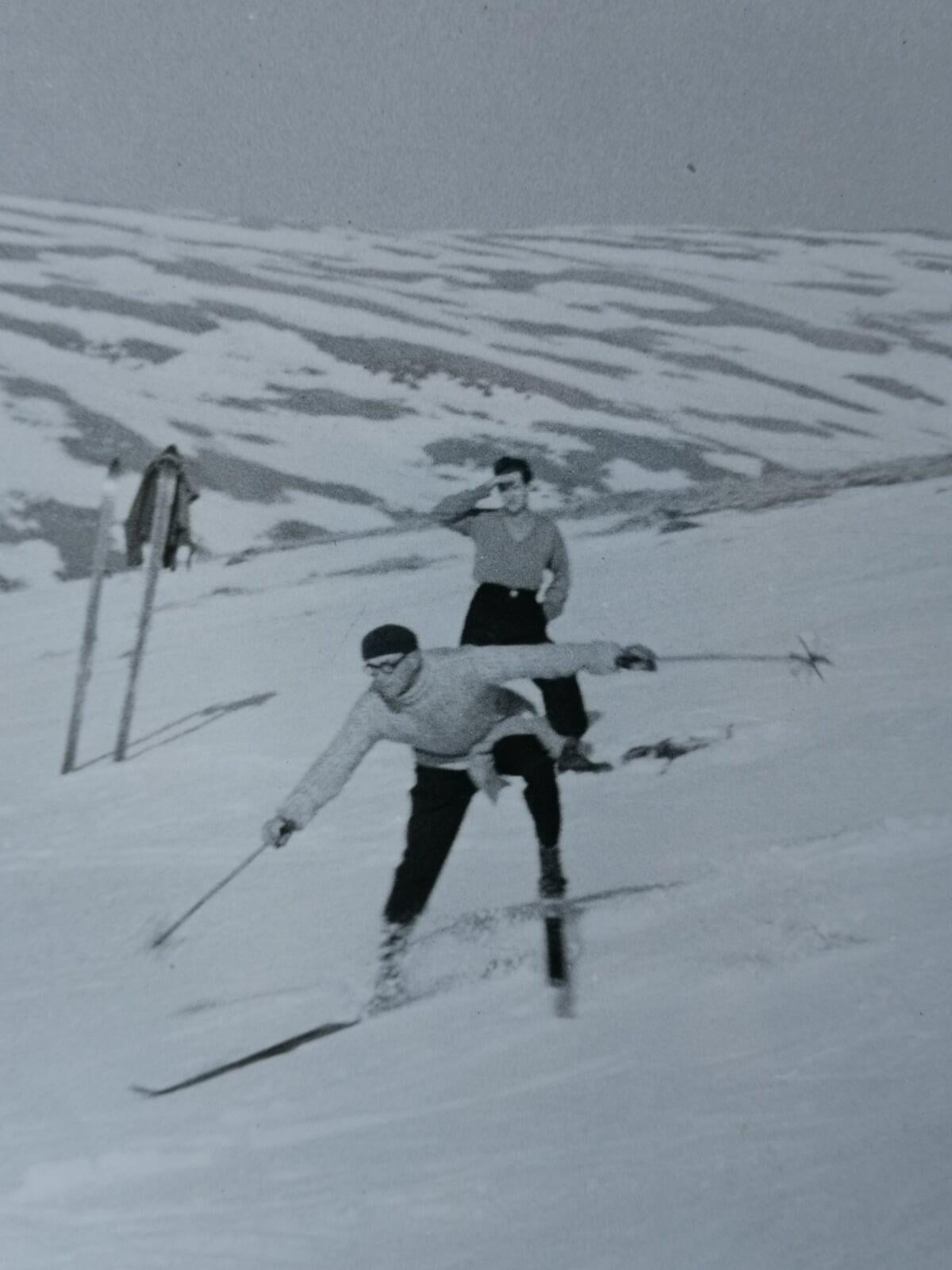
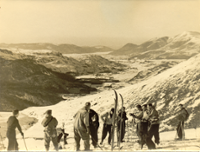
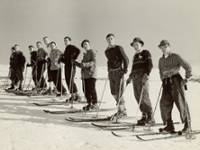
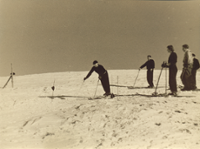
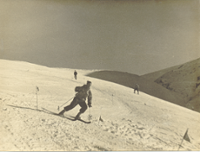
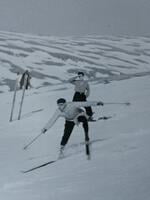
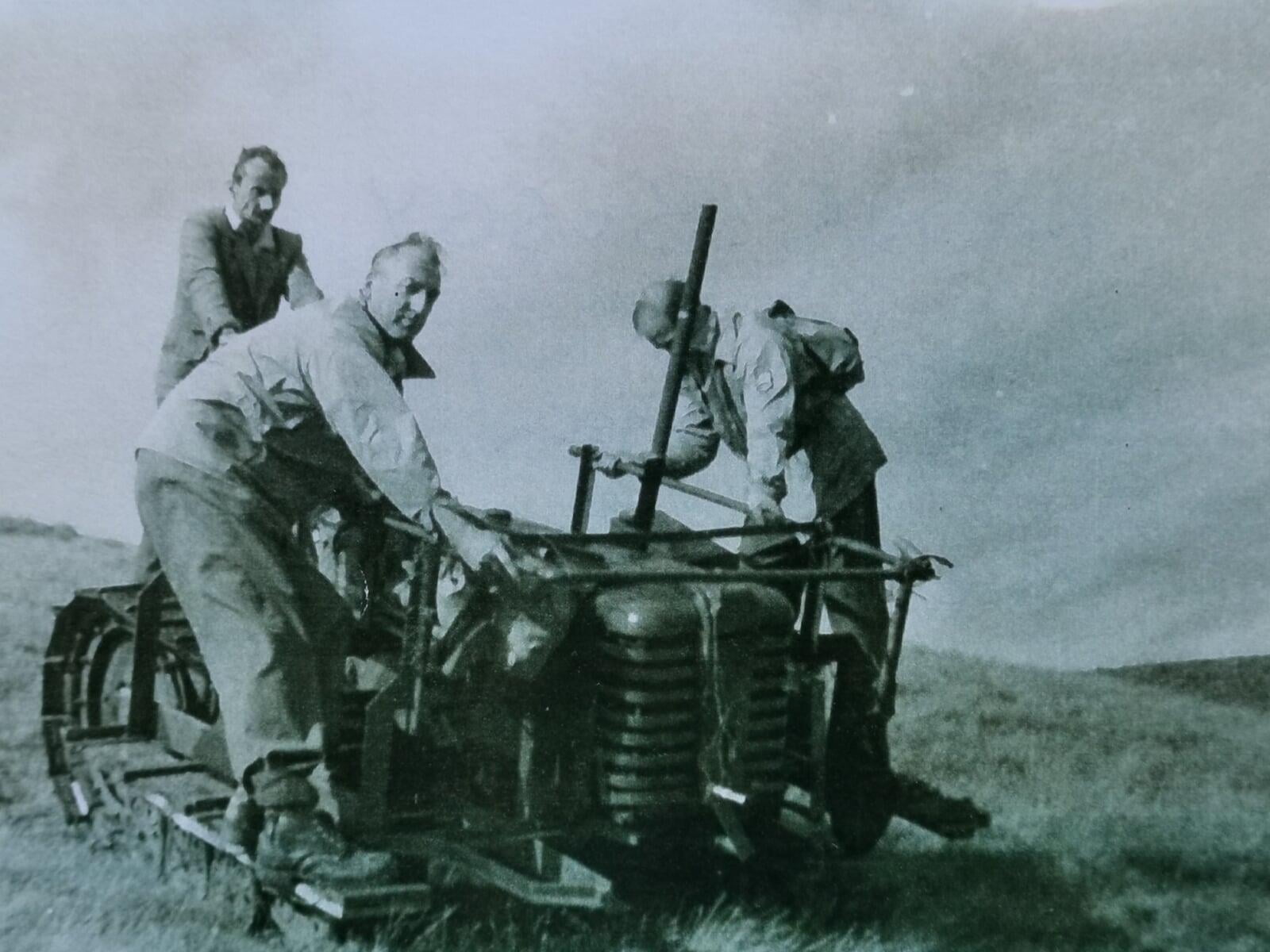
1954 - the first motorised uplift on Raise
One fine spring Sunday in 1946 when skiing had resumed in earnest, a party was out among the Dodds but members were disappointed by the limited length and quality of the snow drifts. Arriving at Stybarrow and looking south, “to our amazement [we] saw the most beautiful drift covering the whole north face of Raise”. The following week they climbed by what is now the usual Greenside chimney route and “enjoyed a wonderful day”.
The writer of those words was Frank Kieser, a garage owner from Penrith and, as he related, “my mind now turned to uphill transport.”
There were no ski lifts in the UK before this point although cars and ponies were sometimes pressed into uplift service. Where skins – then real sealskin – were not available or unaffordable, our members often used hessian tied to the bottom of their planks.
"Infernal contraptions"
Frank designed a tow in 1951 which would propel itself up the fell, using a two-wheel garden tractor. “As with all prototypes, the machine left a lot to be desired,” he wrote. Frank also noted that the advent of these “infernal contraptions” on the fells was not without its critics.
Undeterred, Frank then converted a tracked buggy to carry six people up the fell (pictured). It didn’t cope very well with the Glenridding zig-zags and, like many of his devices, was a potential death trap. Hitting a concealed rock one day, it discharged five of its passengers onto the snow. The remaining occupant, Jean Marshall, “clung on for dear life” while the tractor raced away at full speed towards a 100m drop. Fortunately, full speed was just 4mph and Frank was able to race after it and regain control just in time...
Frank’s next attempt was a modified three-ton Bristol which was much more successful and used to carry up a massive twin-cylinder Lister diesel motor for a new permanent tow completed in 1954. While our friends at the Glencoe ski resort claim the first permanent tow in the UK, that wasn’t completed until 1955 and, according to our first hut warden Des Oliver, its builders came to Cumbria to glean information about our set-up before they set to work...
Shelter from the storm
Relatively reliable uplift achieved, the club turned its attention to building a members' hut. It was pre-fabricated in Penrith for assembly on the site of an old sheep pen, subsequently also used as a foundation for the current hut.
The hut team established a base depot at Keppel Cove and six months of hard labour followed. Around seven tons of timber, cement and glass was winched up and over Raise each Sunday, 100 metres at a time, using the Lister ski tow and a specially-constructed trailer which had both wheels and skids. A near-disaster occurred when the tow rope snapped and the trailer shot down the hill and ran over Teasdale Stevenson’s toes, fortunately without injury.
Meanwhile, the hut base was being constructed by builder Freddie Bantock, and his “Keswick lads”.
1958’s winter arrived and work to assemble the hut quickened. The last nail was driven in on New Year’s Day 1959 and the club had its first home on Raise.
The hut was secured in place using cables over the top, attached to stays driven into the fell either side. Des Oliver claims that the job of driving in the angle iron pegs was given to “the wives” of the club - which tells you a lot about what Cumbrian men considered womens’ work.
Unfortunately, during a storm the following season, these stays pulled out of the ground and the hut blew off its base. Harry Griffin led a team to haul it back into place, and this time, concrete in the pegs...
First ski descent of Helvellyn
It’s also worth recording that the remarkable Ivan Waller made the first-ever ski descent of the Helvellyn Red Tarn Face just down the ridge from our place in 1951 – on wooden skis! In an incident-packed life his climbing abilities helped him escape from a crashing top-secret seaplane after his parachute became entangled on its radio aerial. His obituary on the Alpine Ski Clubpage is also well worth a read.
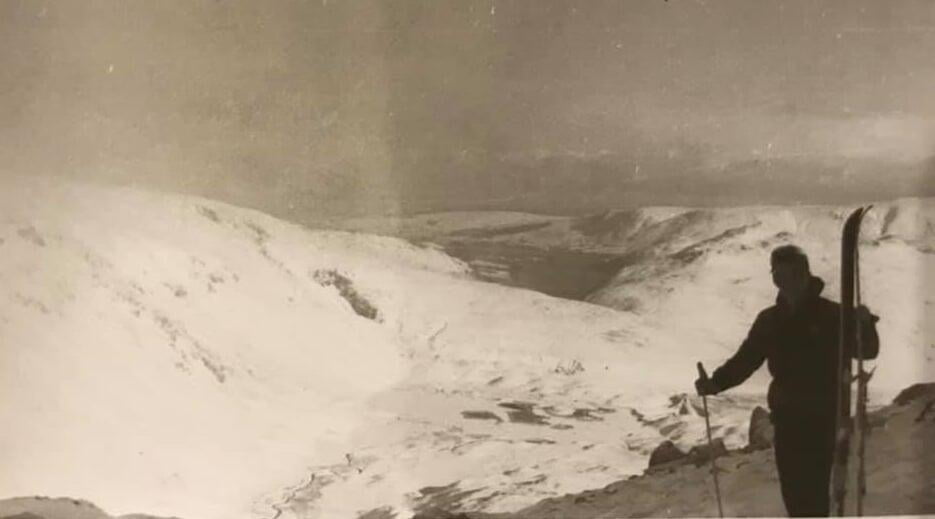
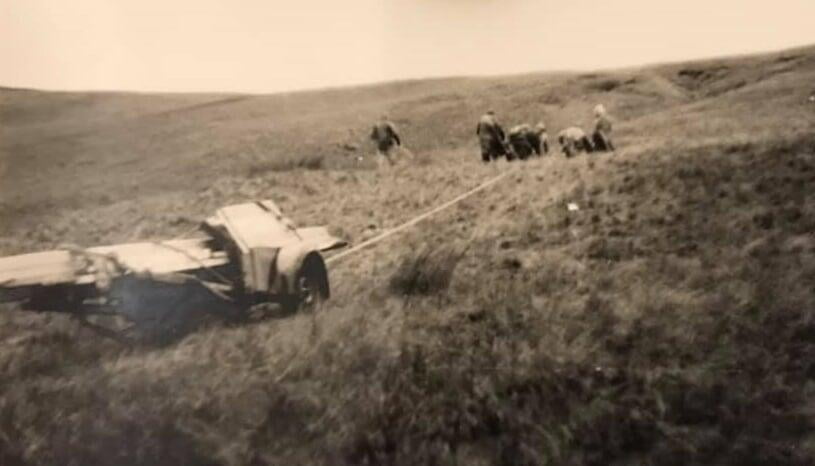
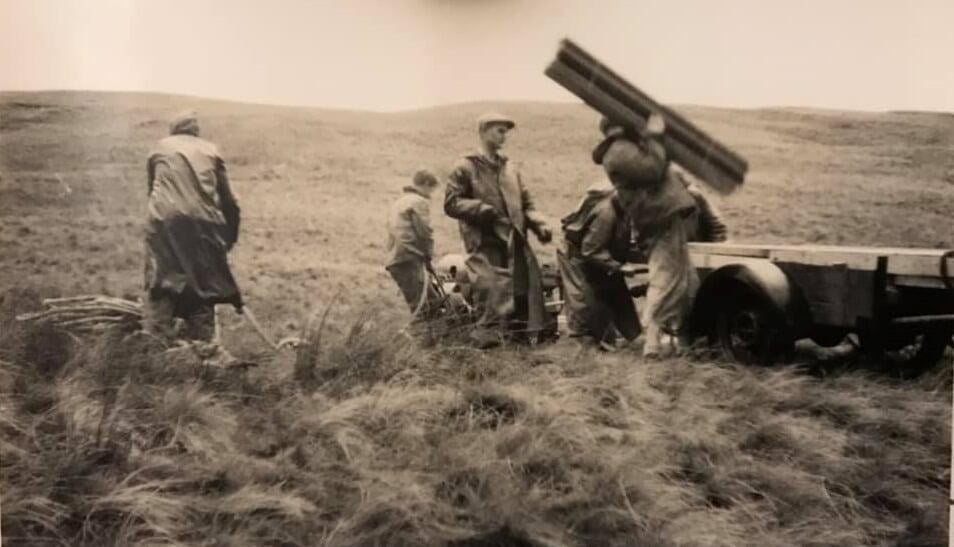
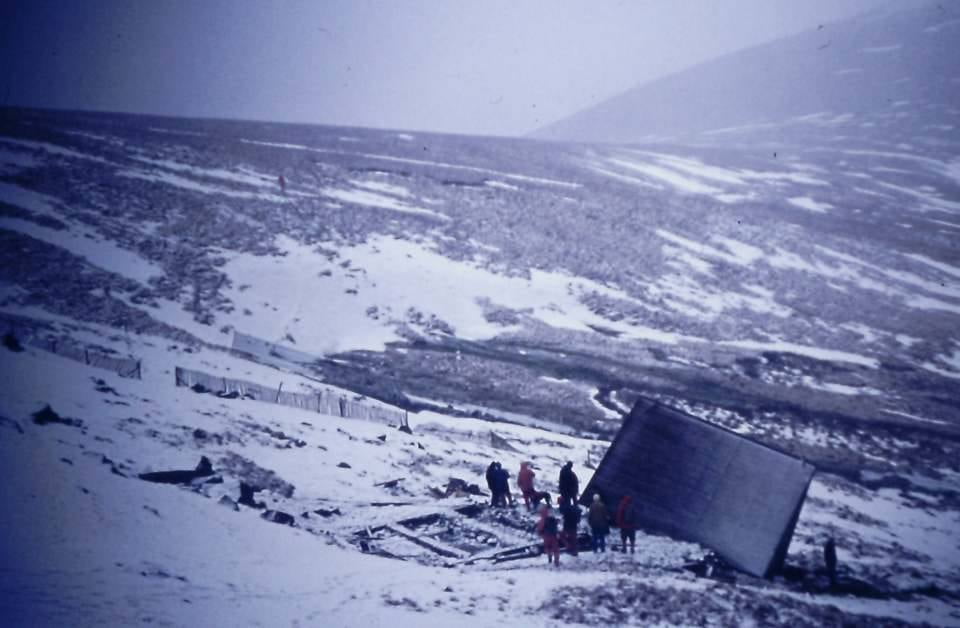
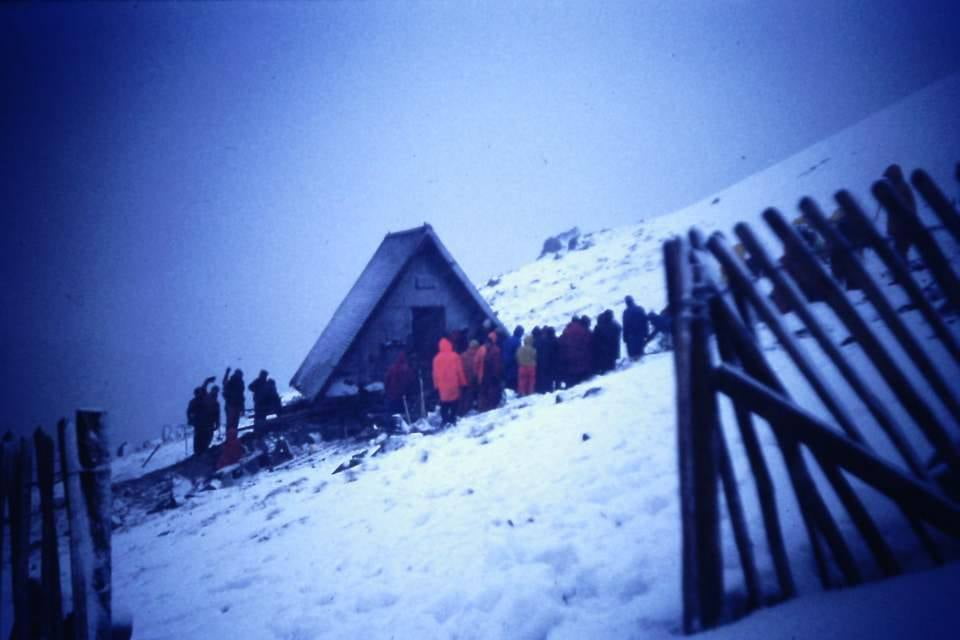
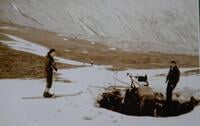
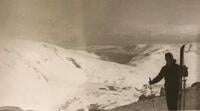
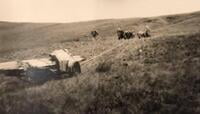
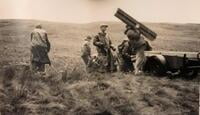
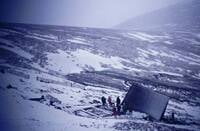
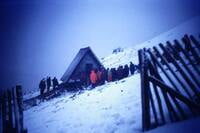
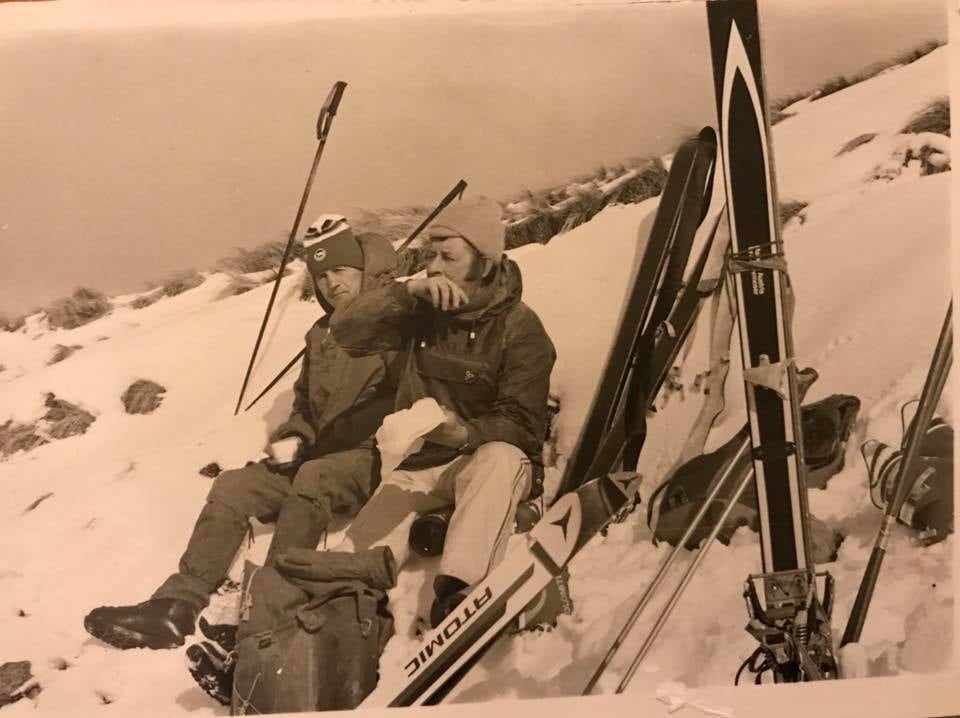
1960s/70s - new rope tow and new era...
Dick Fisher and Des Oliver on Raise
A replacement high-level rope tow was constructed in 1967 under the guidance of Gerald Greenbank as the original rope was frequently buried and had to be dug out.
The engine was at the top of the tow and fully exposed to Raise’s wild weather. To get it started, oily rags were set alight underneath to warm up the oil (!) until a 3-cylinder Lister engine was purchased and members rolled up their sleeves to build a hut, dug into the hillside near the present pylon 5.
The hut roof was made of corrugated sheets covered with turf and rocks; the back wall was stone and cement; and it was built on a typical Raise day with horizontal rain.
The rope passed through a gap in the front (Our tow team supremo Stu has resurrected this idea for the 21/22 season!) and passed over a tractor wheel. Two safety systems could stop the tow – very necessary as all rope will twist under tension. On one occasion the “threading” rope caught a skier’s jacket sleeve and ripped it off. On another, it trapped a dog’s tail. Thankfully all ended well on both occasions. Apart from the jacket of course....
Leather ski boots and wooden skis with cable bindings were being consigned to history by the late 60s and 70s. Ski equipment was changing rapidly and monoskis were one of the new fashions with many members using them at Raise and Chamonix alike. Boarding was also on the increase.
Snow conditions were generally more reliable then with good skiing from January onwards, but some weekends were the dreaded Raise boiler plate. Ice skates would have been more appropriate.
Our longest-standing member James Blacow notes that the annual dinner in those days was very swish: obligatory suit and tie for gents with the ladies stopping just short of tiaras. A band played dance music at a venue to suit the occasion. (Dress codes for gentlemen have become more lax in recent years, but the ladies still maintain standards…)
To become a member you had to complete three work meets. Your application with photo and outline of what you could contribute to the club then went to the next committee meeting for consideration.
With the growing popularity of skiing and boarding, thoughts turned to a new lift system...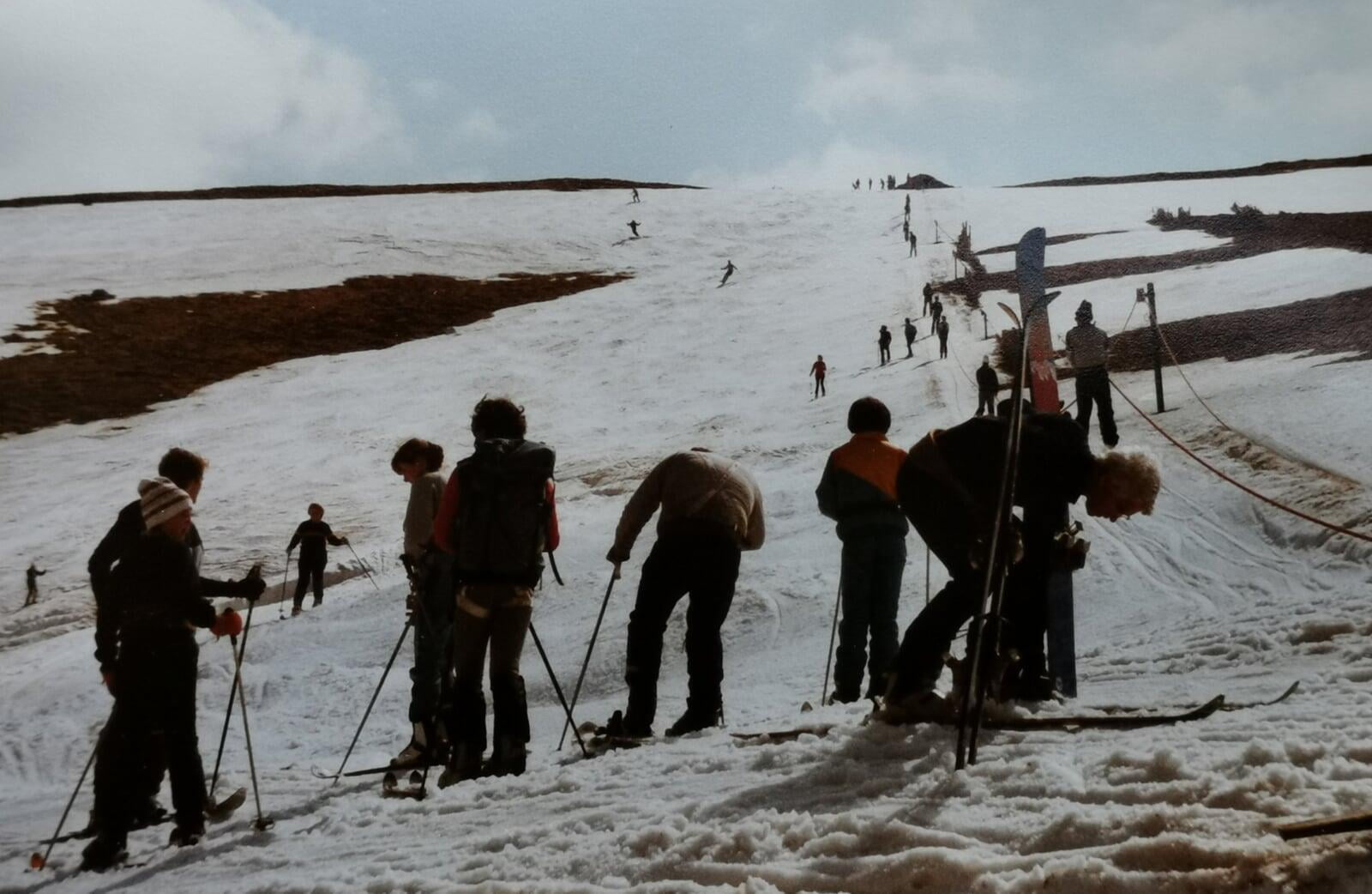
The old high-level rope tow. You can just see the mounded shelter for the engine at the top of the tow. The old members' hut is out of shot to the left of picture
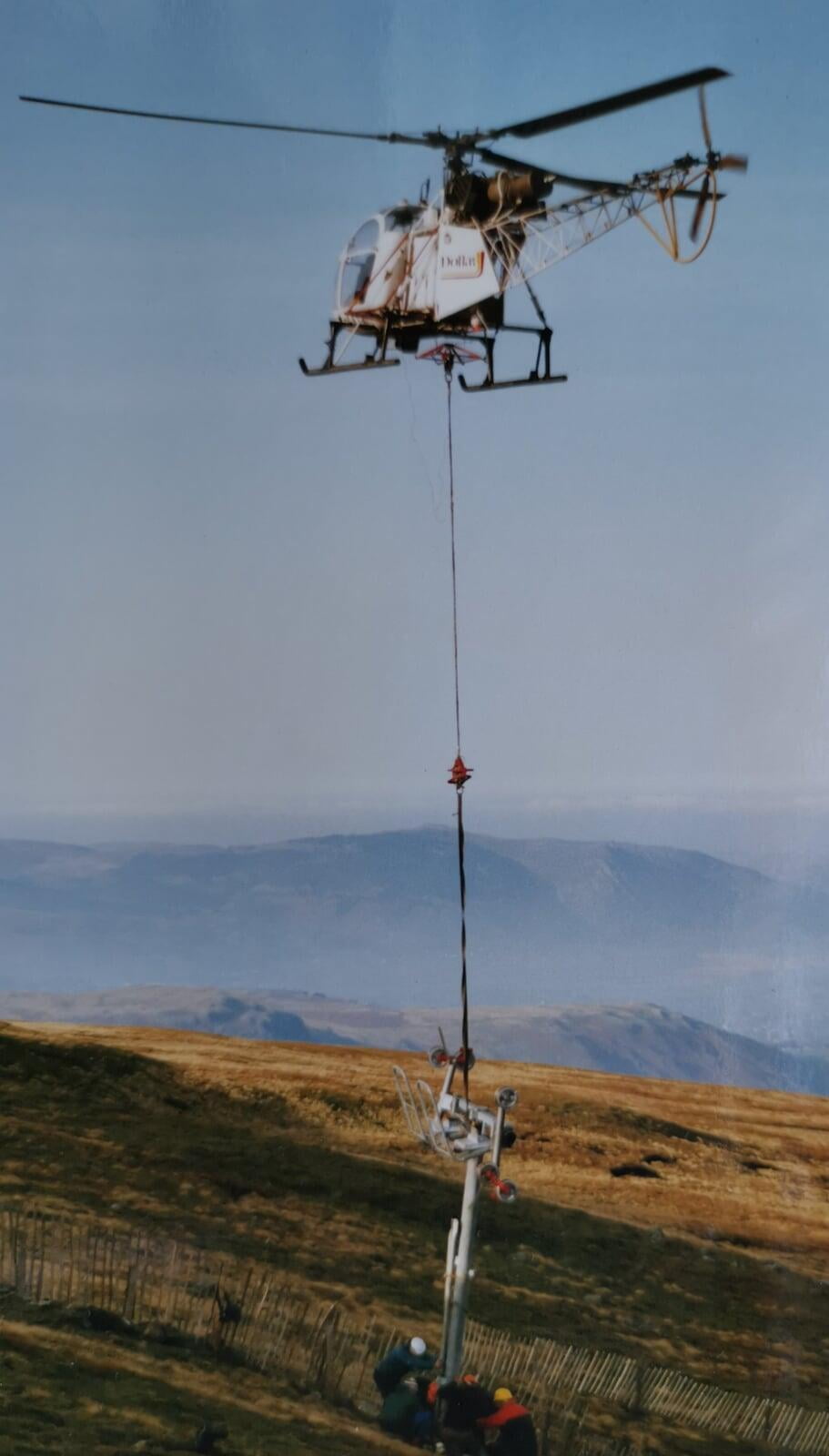
1989 - today's poma installed
The upgrade from the old rope tow was originally proposed in 1977 by Gerald Greenbank but it took 12 years for practical steps, such as fund raising, planning approval, procurement and build for his dream to become reality.
Membership grew as the exciting news spread…
Montaz Mautino
The new tow was purchased cut-price from Montaz Mautino (partly ungalvanised as the company was going into liquidation) and shipped across. The tow and generator made up the bulk of the overall £55,000 cost. This was funded mainly by £18,500 in interest-free loans from members and grants totalling £20,000 from the Sports Council and English Tourist Board.
Bernie the Builder - Can he build it? Yes he can..
Club legend and self-taught master builder Bernard Warriner BEM led the build.
The bases for all the pylons were dug and filled by hand with the aggregate brought to Keppel Cove by tractor and trailer before being air-lifted up and over. The pylons were assembled at the mines, helicoptered up Raise and lowered into place, one every seven minutes! (pictured) The dismantled old tow, engine hut and engine were flown down as the sun was setting.
Nor any drop to drink...
A major construction problem was finding water on the fell to mix concrete for the pylon bases during this scorching summer. It was solved partly through building a dew pond and partly by carrying up water from the bog below the slopes in a variety of utensils, including a pair of knotted over trousers!
It's never icy on Raise...
By this time a phone line had been set up to give a daily update on conditions. Bernie’s recorded messages became a club meme for their artistic licence (what most of us would call boilerplate was “firm snow” to Bernie…).
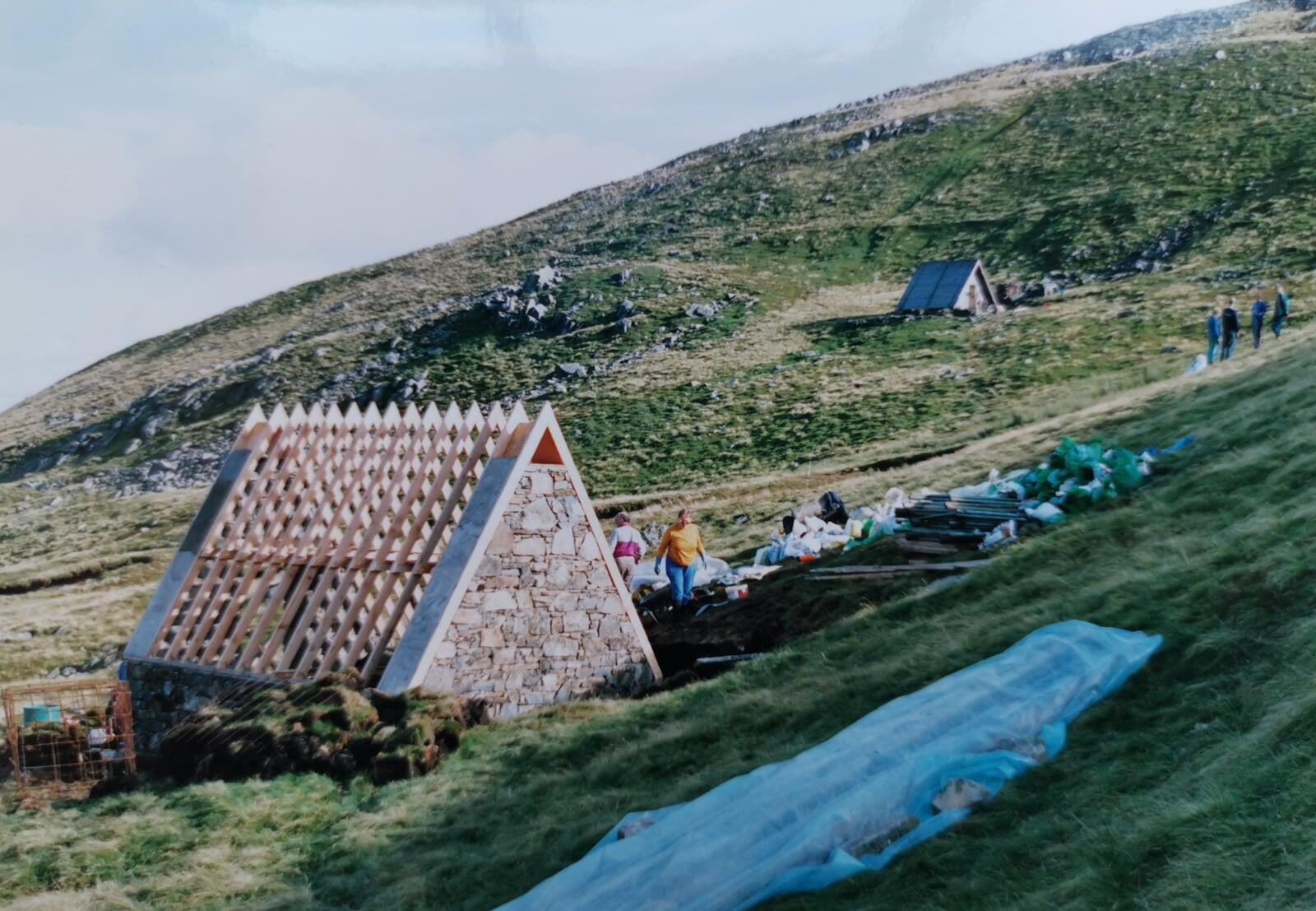
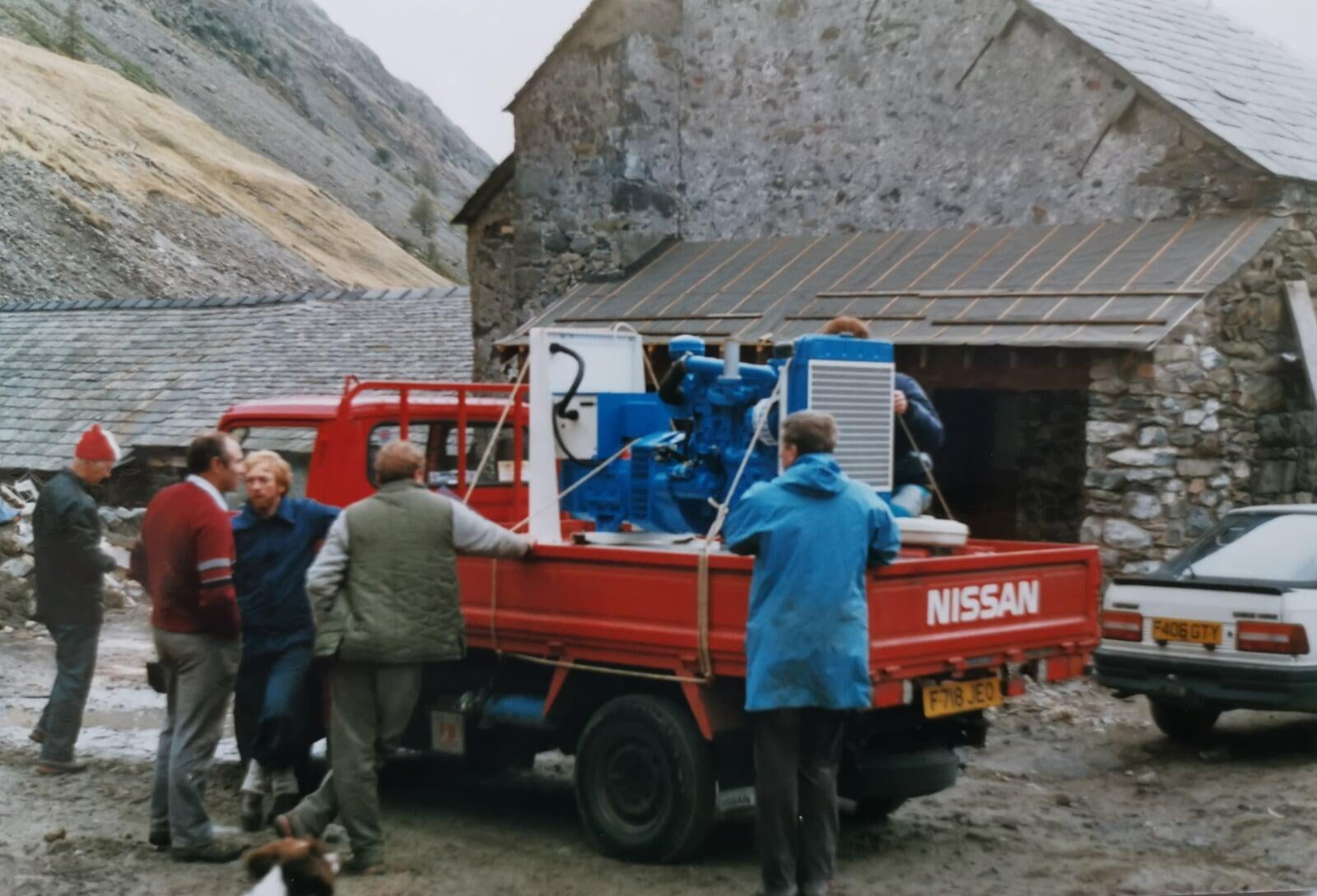
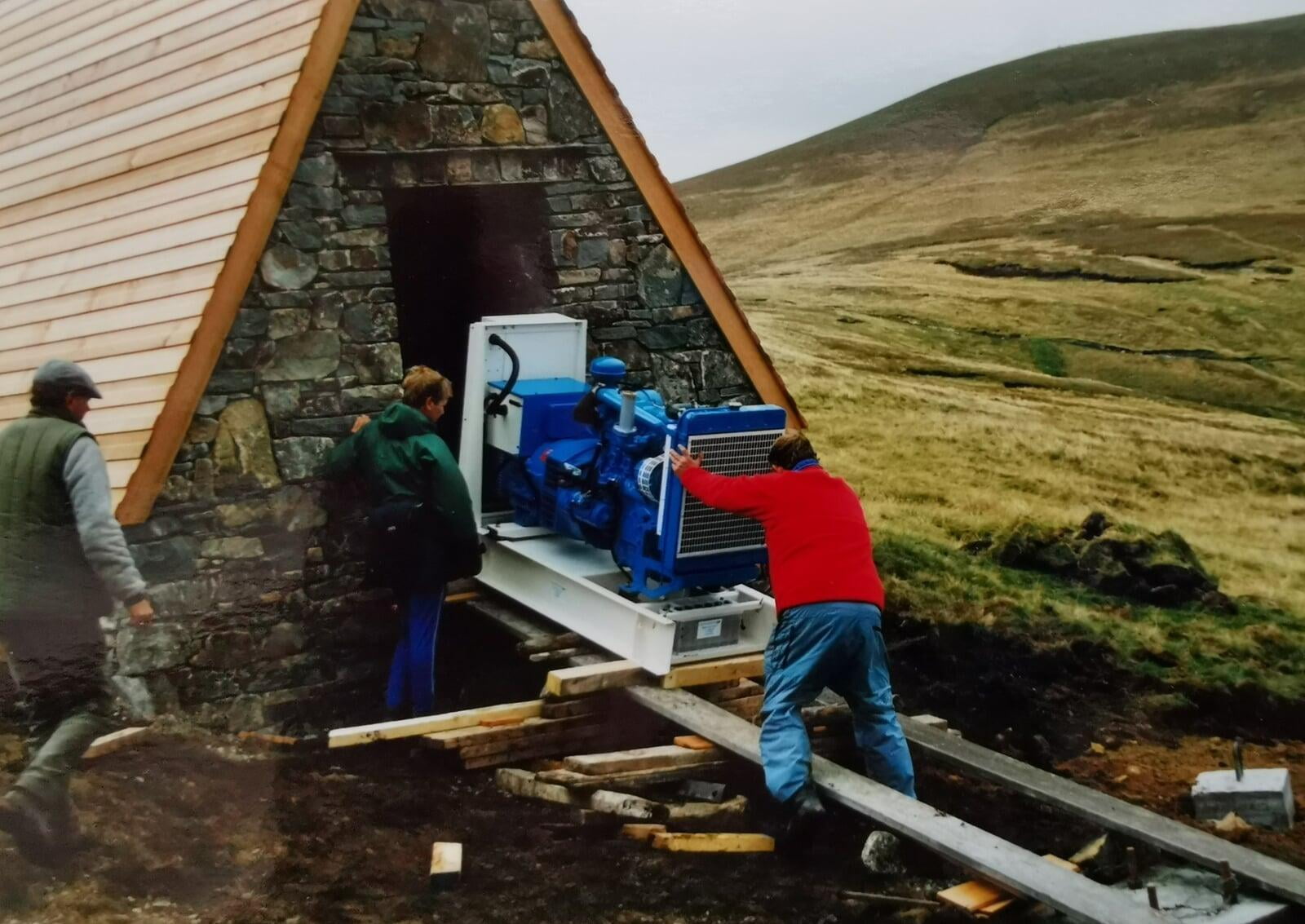
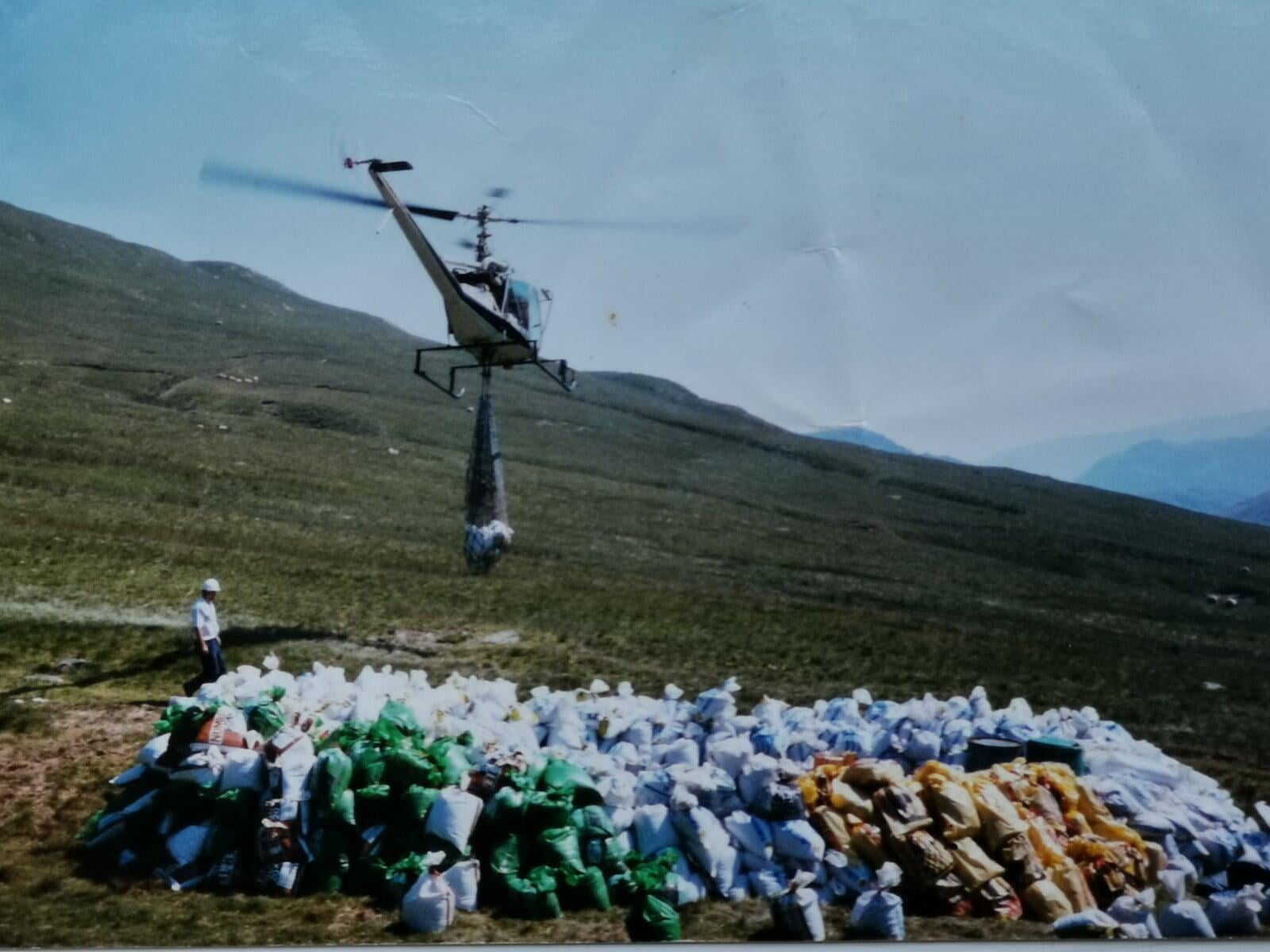
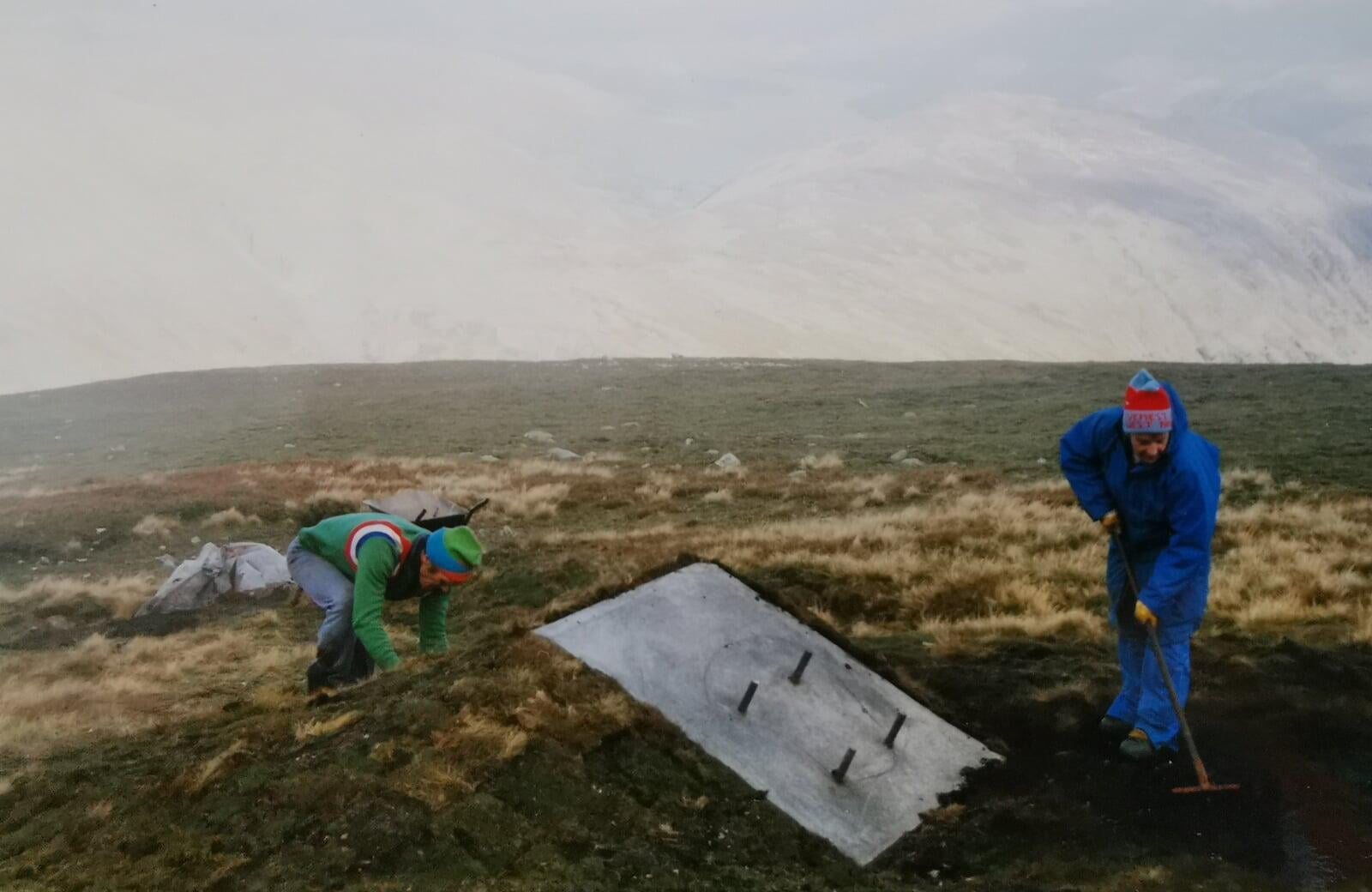
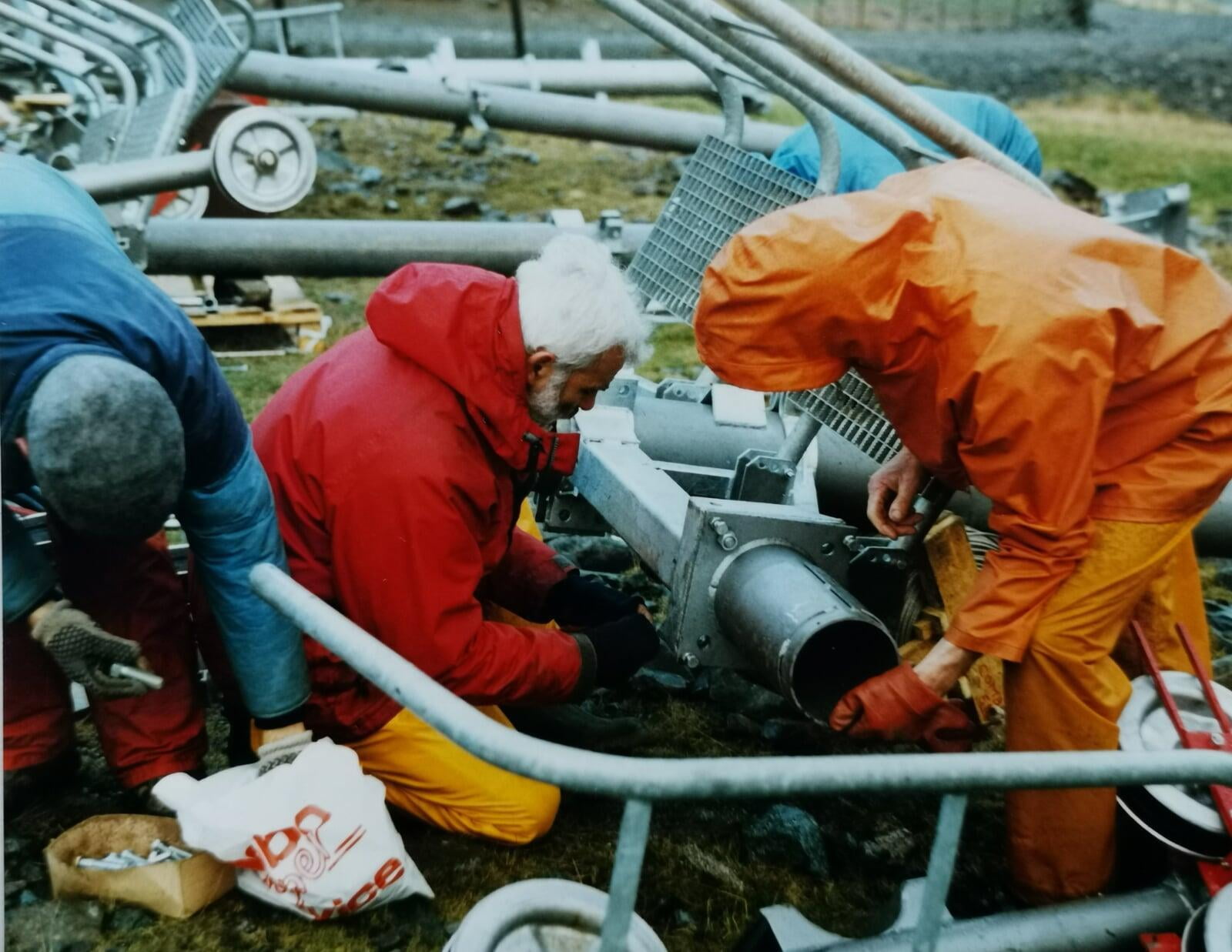
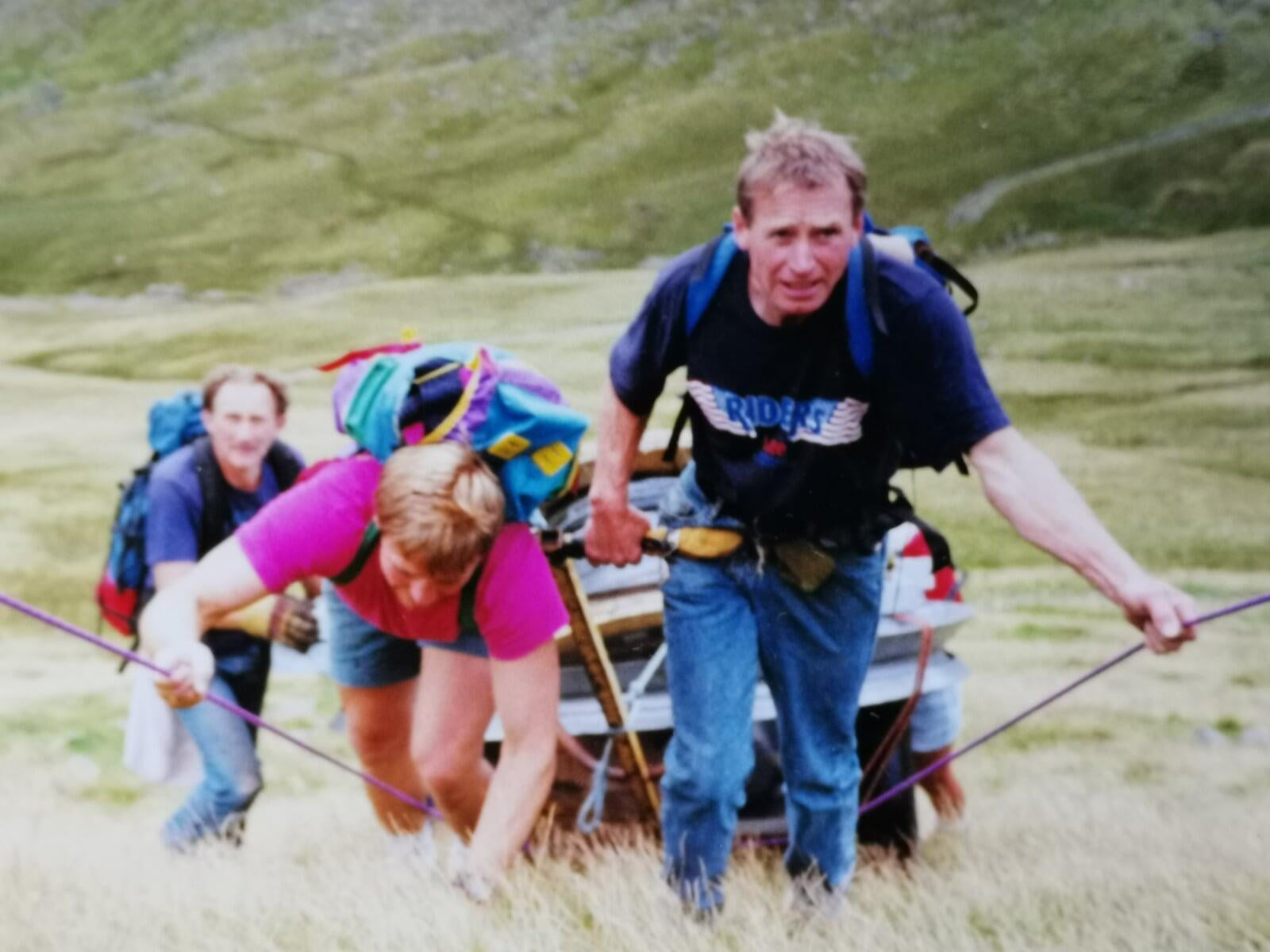
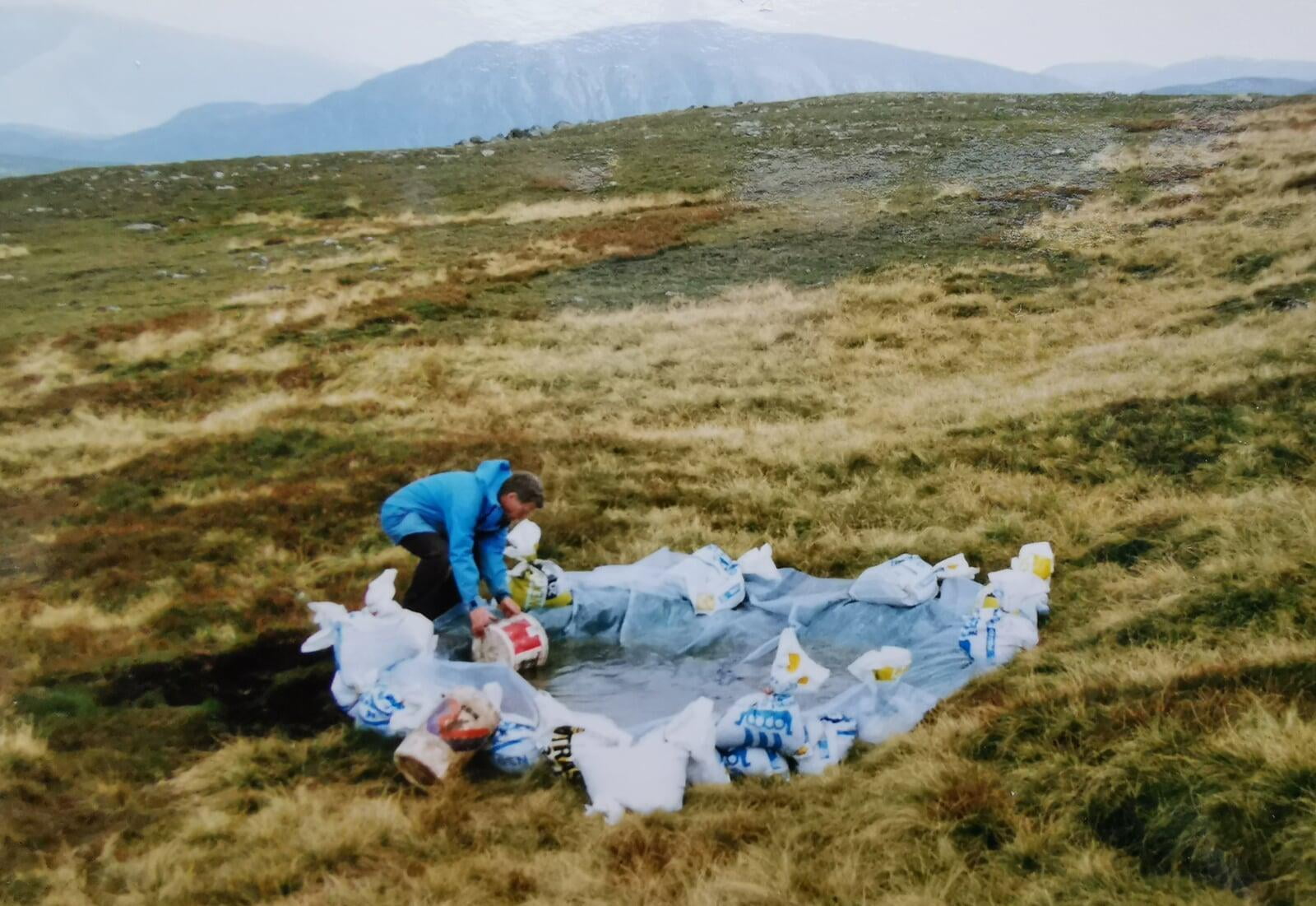
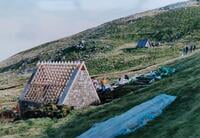
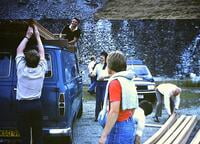
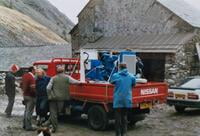
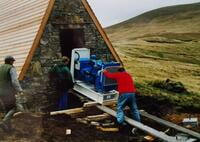
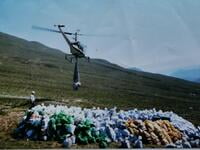
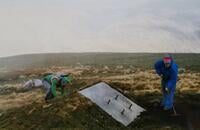
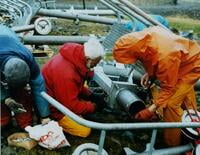
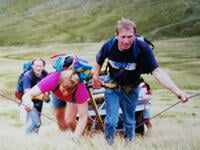
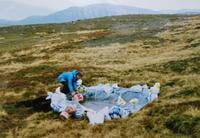
The 1990s - too much snow!
A new millennium and a new members' hut

Pic: Tom McNally
The current Millennium Hut was built by Bernie over 66 days during the summer of 1999, aided and abetted by club members. Bernie gave up another summer and camped on the fell so he could start work early each new day, with helpers coming up to assist and restock his food supplies. His shower was a hosepipe warmed in the sun...
Built on the base of the earlier hut, our present cosy refuge has higher eaves and gives a lot more internal space. It’s built to the highest standards and provides a very welcome respite from Cumbrian storms, with its electric heaters and kettle.
Millenium midnight ski
To mark completion, six members skied through the last seconds of 1999 into the new Millennium by the light of head torches as fireworks illuminated the Cumbrian night sky. The following morning the revellers awoke early and climbed to watch a magnificent sunrise over High Street from the top of Raise. They returned to the hut to see Kurt Knoffel’s large black dog appear round the corner with its owners’ ski boots in its panniers. And so began Cumbria’s first skiing in the 21st century.
Countryside closed…
However, nobody got to play in the great snow of early 2001 – the countryside was out-of-bounds due to Foot and Mouth disease.
Early noughties - Powder!
Powder Room 2011
Hut warden Eleanor Unthank and president Gerard Unthank declare the Powder Room open!
The club has always drawn many female skiers and their eccentric plumbing arrangements used to mean finding a suitable rock behind which to commune with nature. Undignified and not very comfortable in horizontal Cumbrian sleet...
All that changed in 2011 with the commissioning of the heated Powder Room. Built onto the back of the tow hut, it is the second-highest flushing loo in England after the one at the air traffic radar station on Great Dun Fell in the Pennines. It has proven very popular with our lady skiers and boarders. Which of course puts them among the highest peers in the land...
2013-14-15 Powder everywhere!
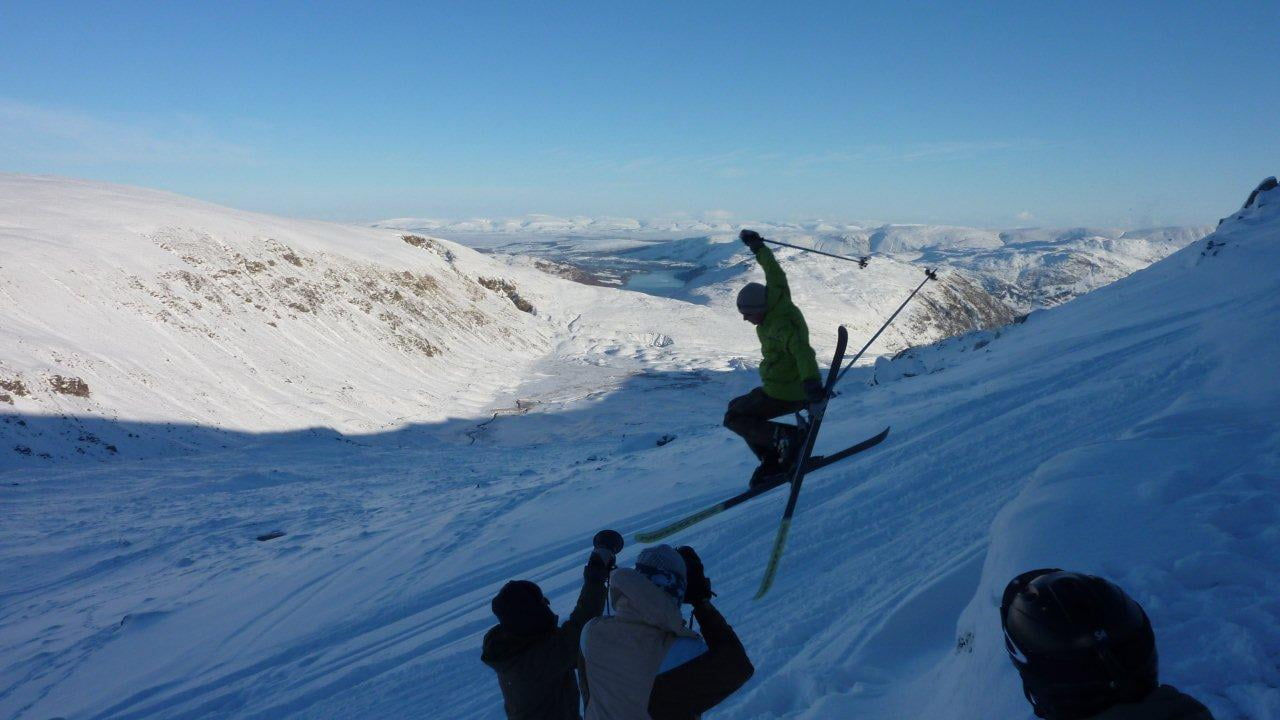
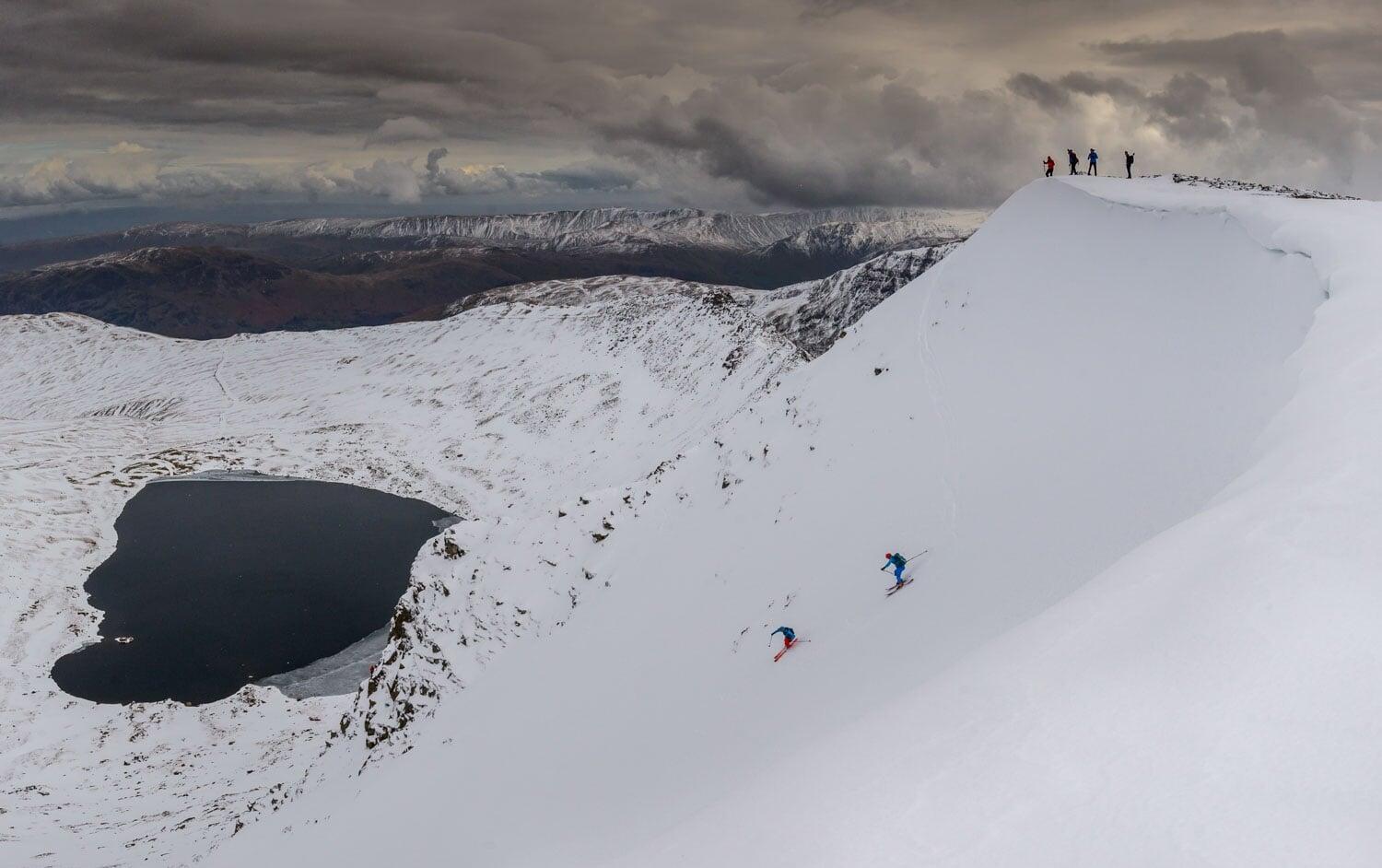
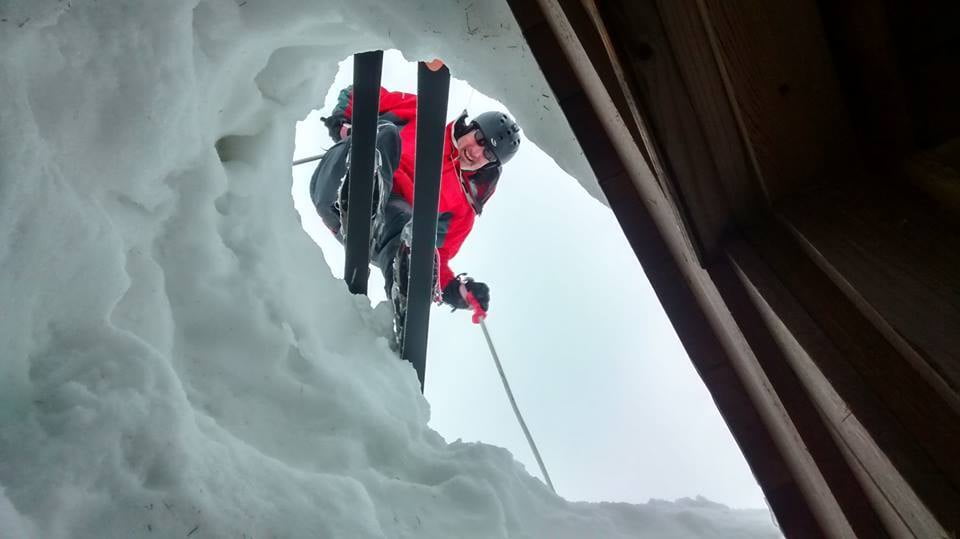
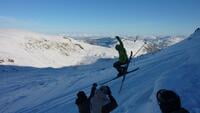
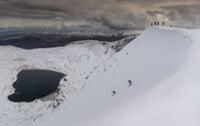
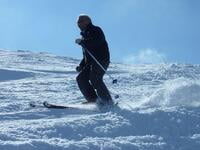
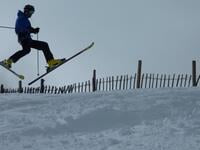
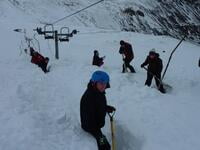
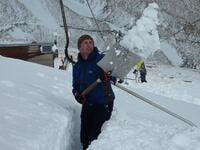
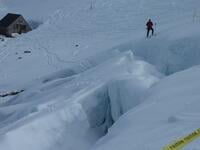
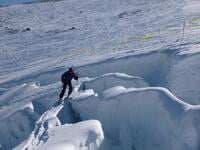
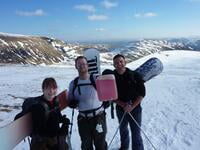
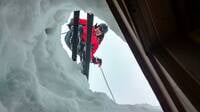
2015 - Storm Desmond
Cumbria was plunged into chaos following the high winds and Biblical downpours of Storm Desmond in December 2015. Described as “the worst to hit the county in 600 years”, 40cm of rain fell on Thirlmere within 48 hours, washing away the A591 and on “our” side of the Helvellyn Massif, much of Glenridding was submerged.
The club suspended skiing following the storm, partly as the track to our car park was badly damaged, and partly out of respect to the devastated local community.
Across Cumbria it has taken major engineering efforts to clear out the rocks washed down from the fells by the force of the floods. Glenridding Beck’s banks have been reinforced. Up on the fell Eleanor Unthank is still co-ordinating our remediation work at the bottom of Savages Gulley, after a bank collapse and landslide obliterated it, threatening tow pylon 3.
For many years the club has carried out the bulk of the work on the Greenside track, benefitting the local hostels and wider community, as well as giving easier access to our car park. Under Stu Sharp’s leadership we put in an extra effort following the flood to resurface the track and clear its ditches and culverts.
We hope to be able to announce further practical measures to support Patterdale’s flood resilience efforts in the near future.
Pictured above left: Club members repair Storm Desmond damage to the Greenside track. (Right) Work to stabilise the slope collapse at the bottom of Savages Gully is still continuing
